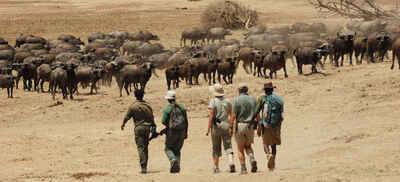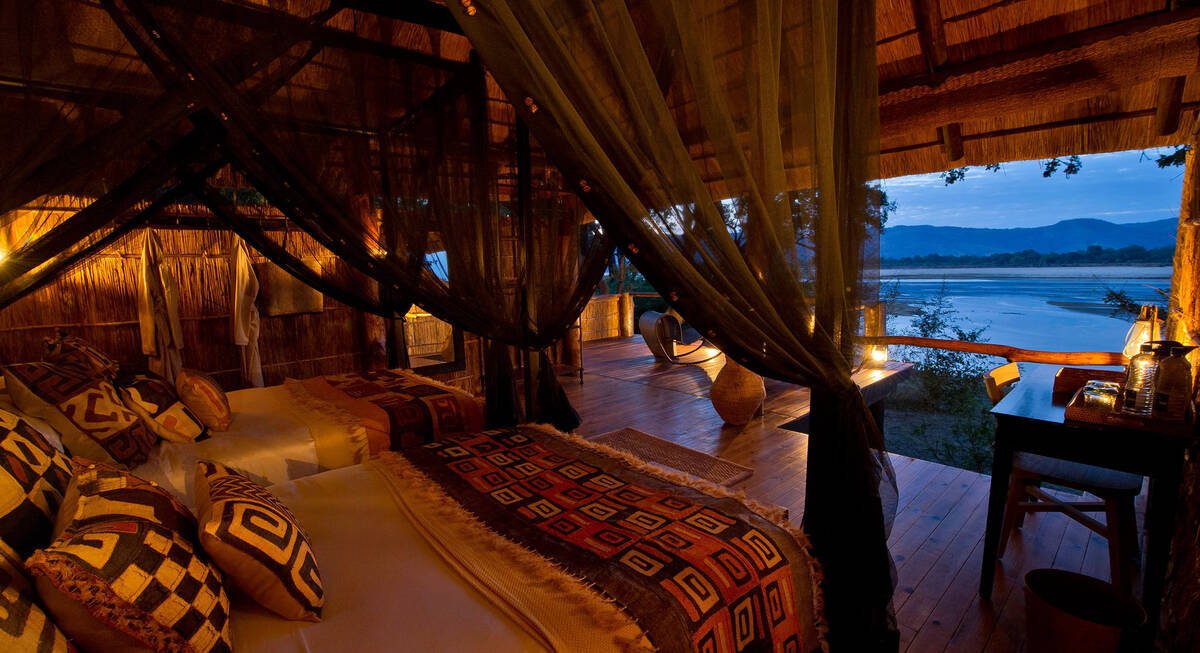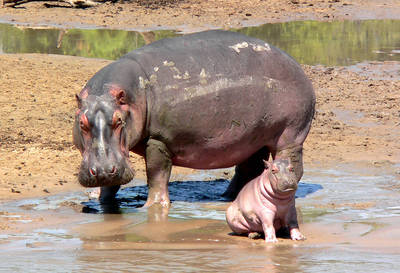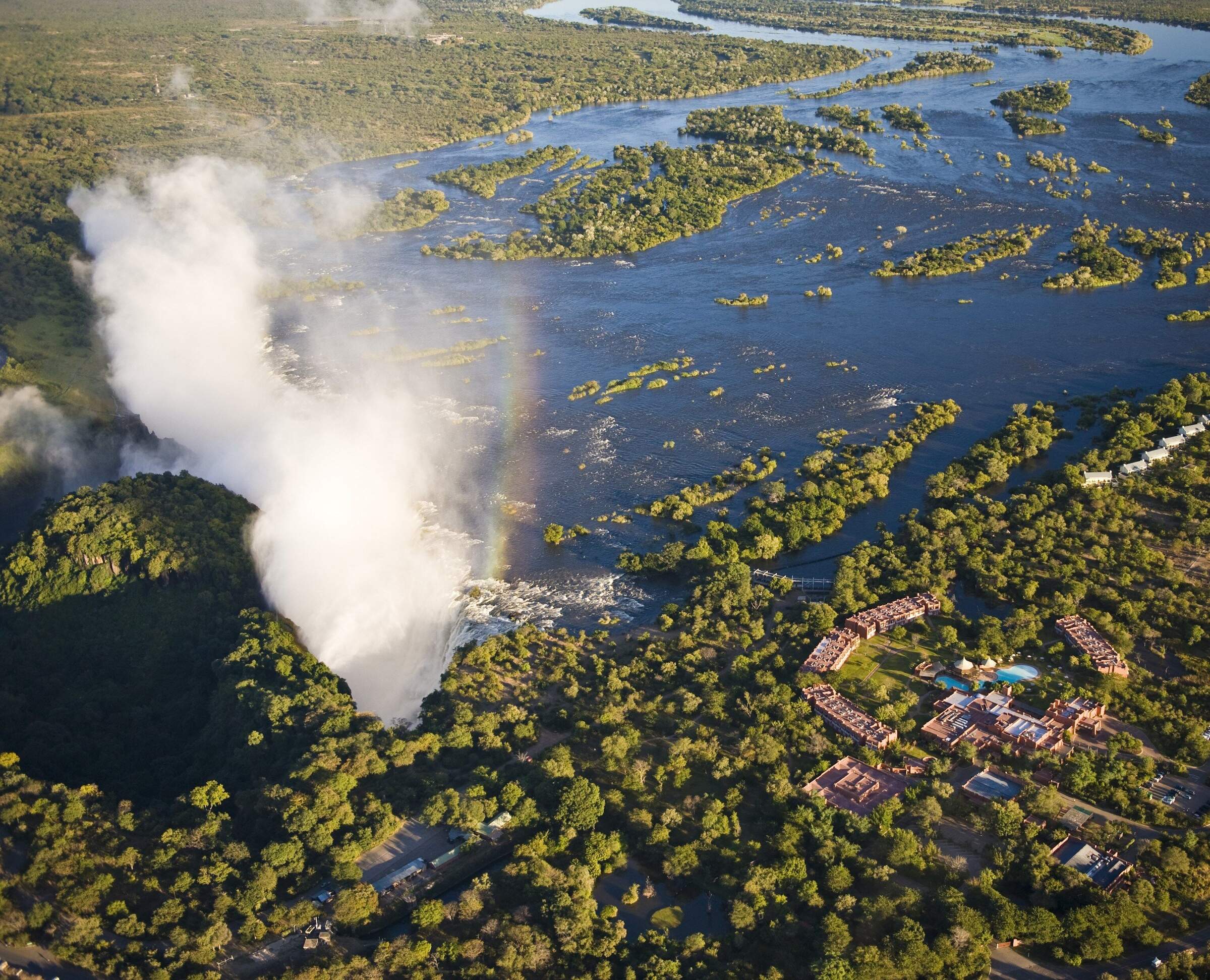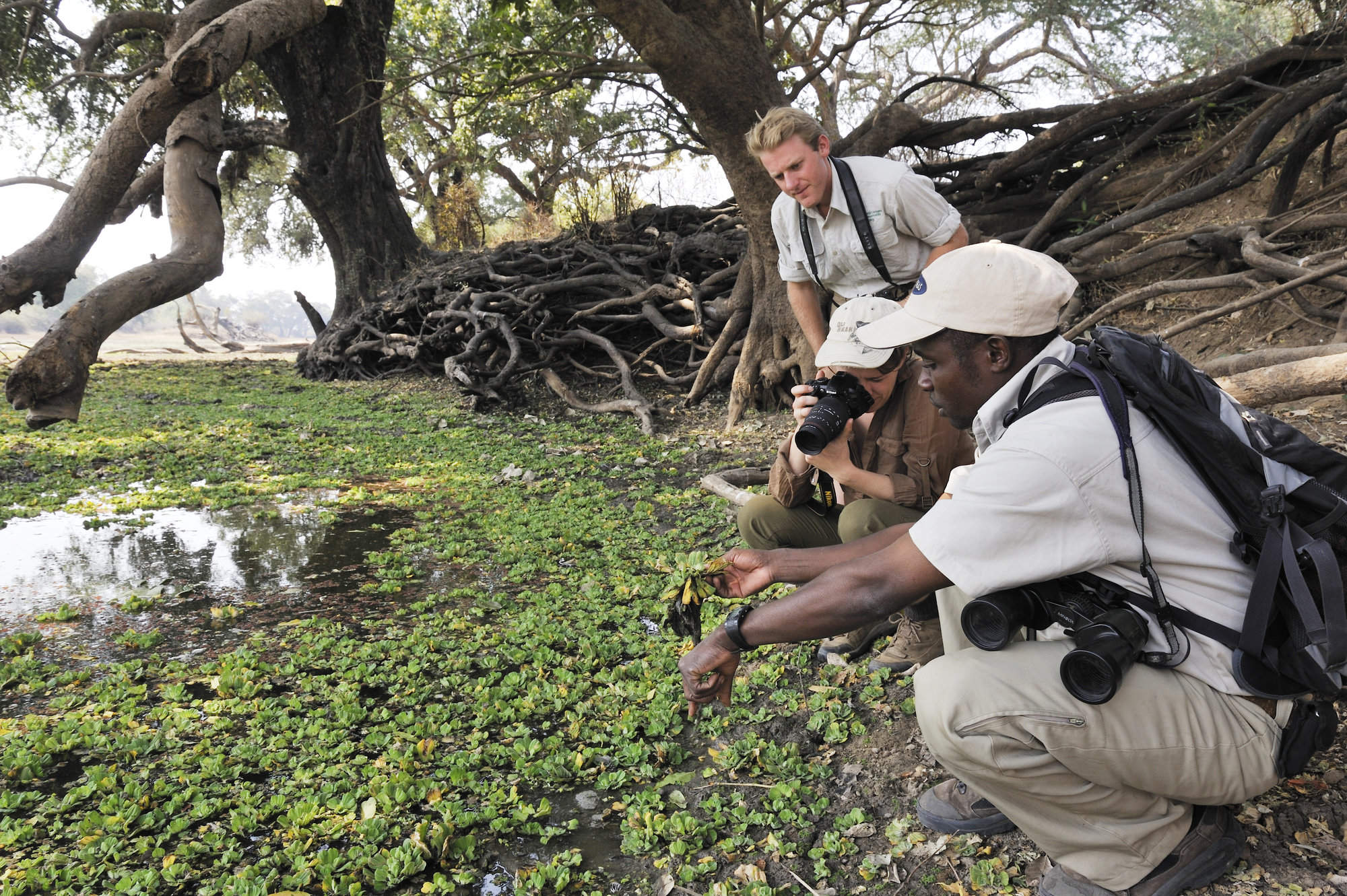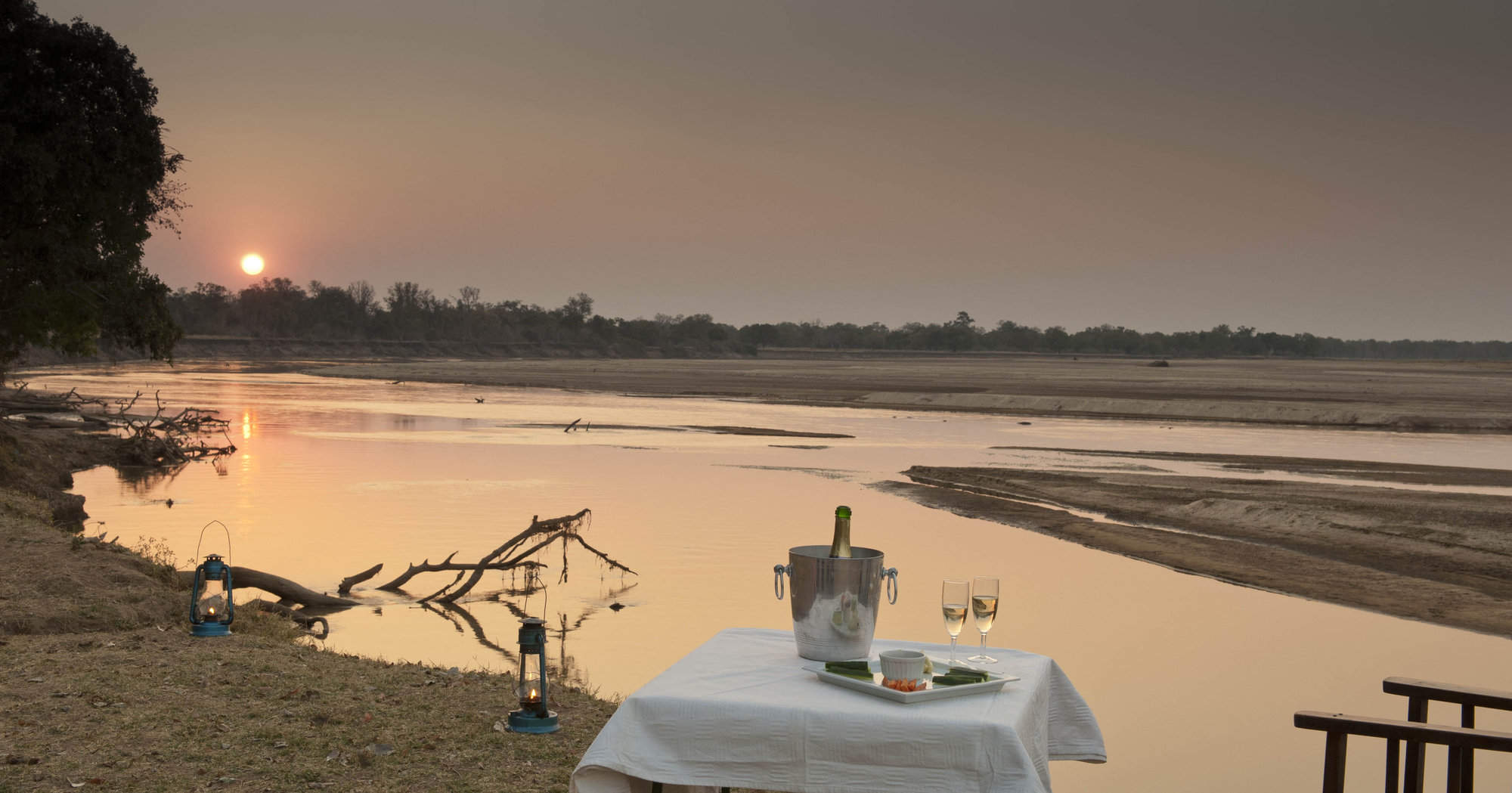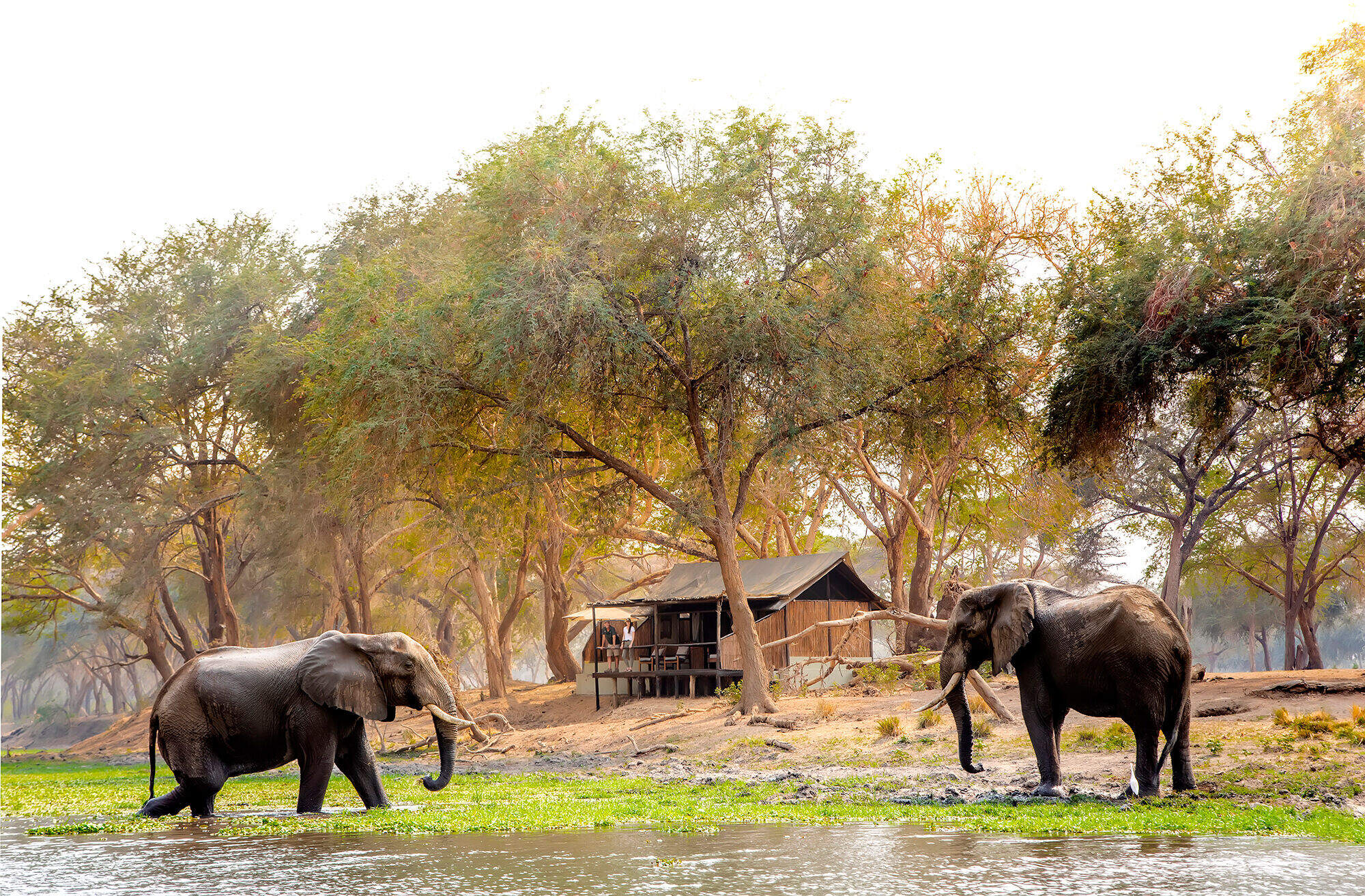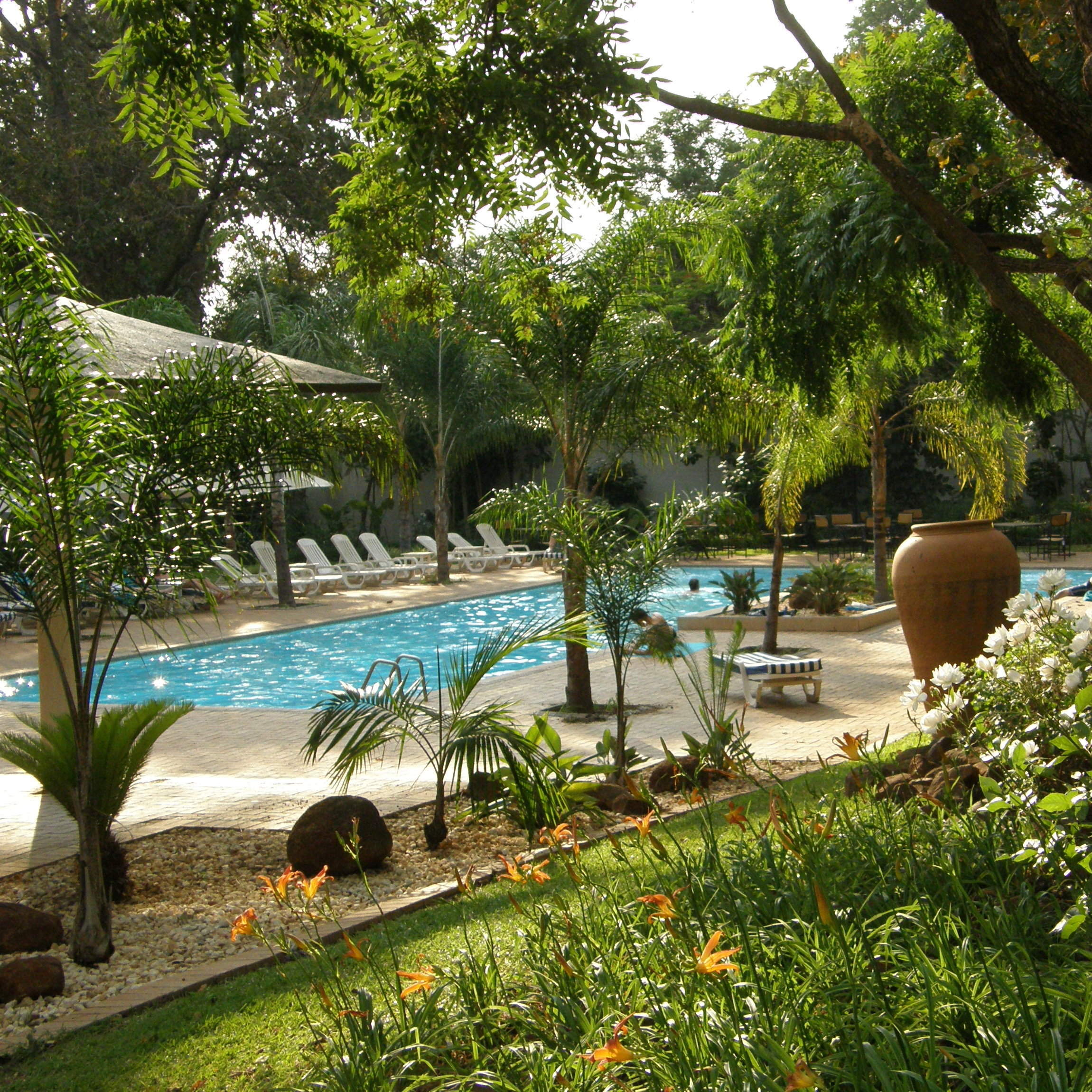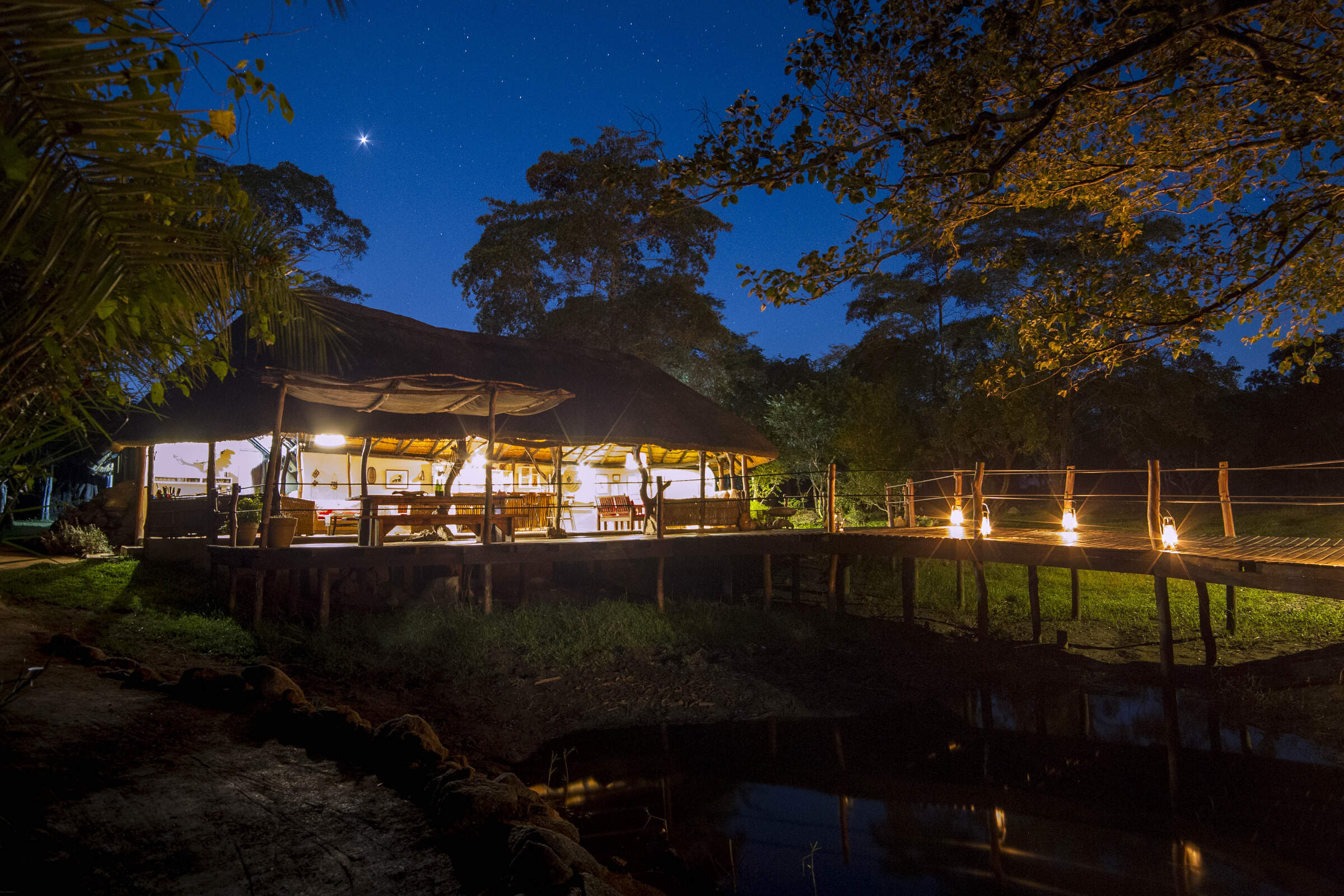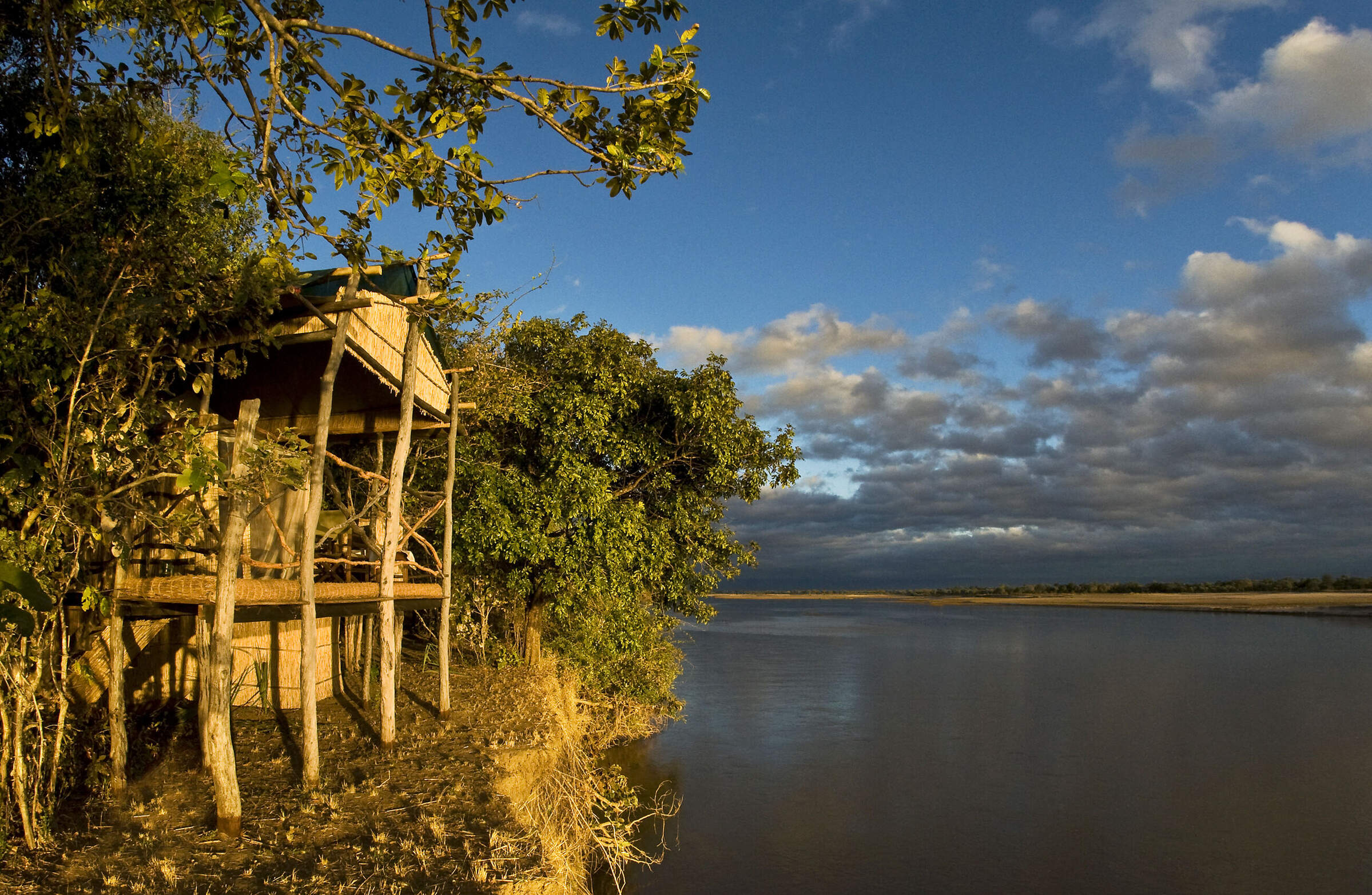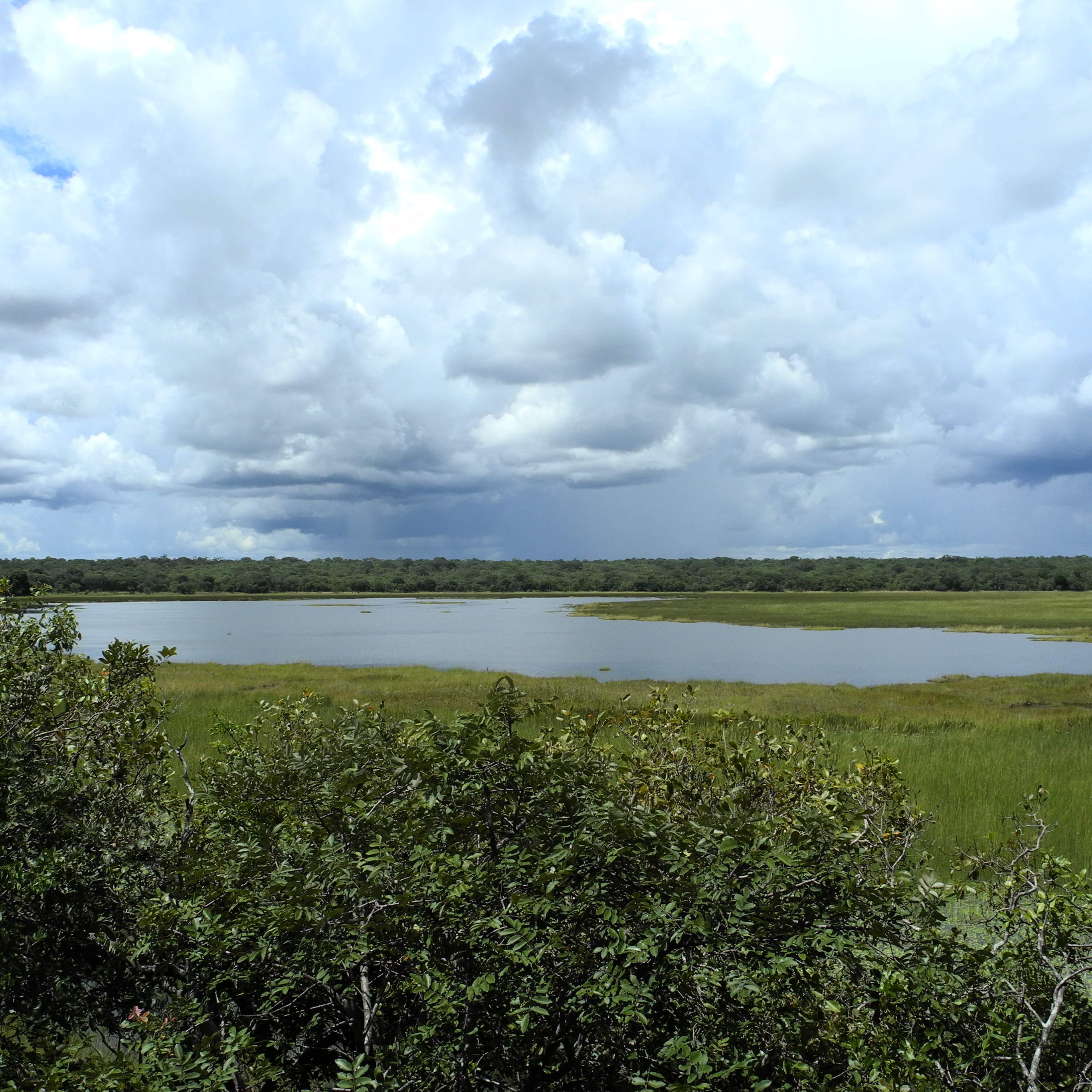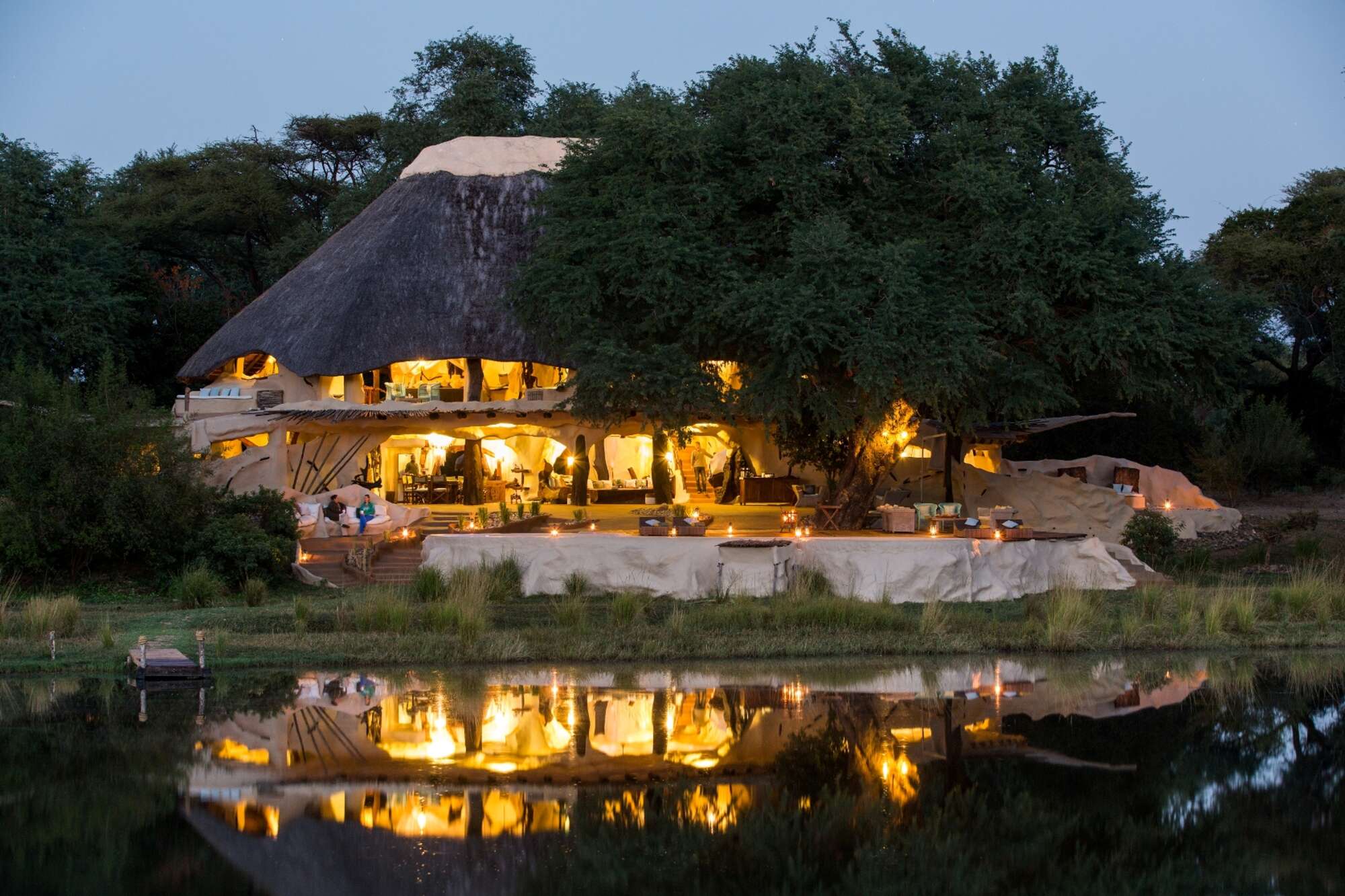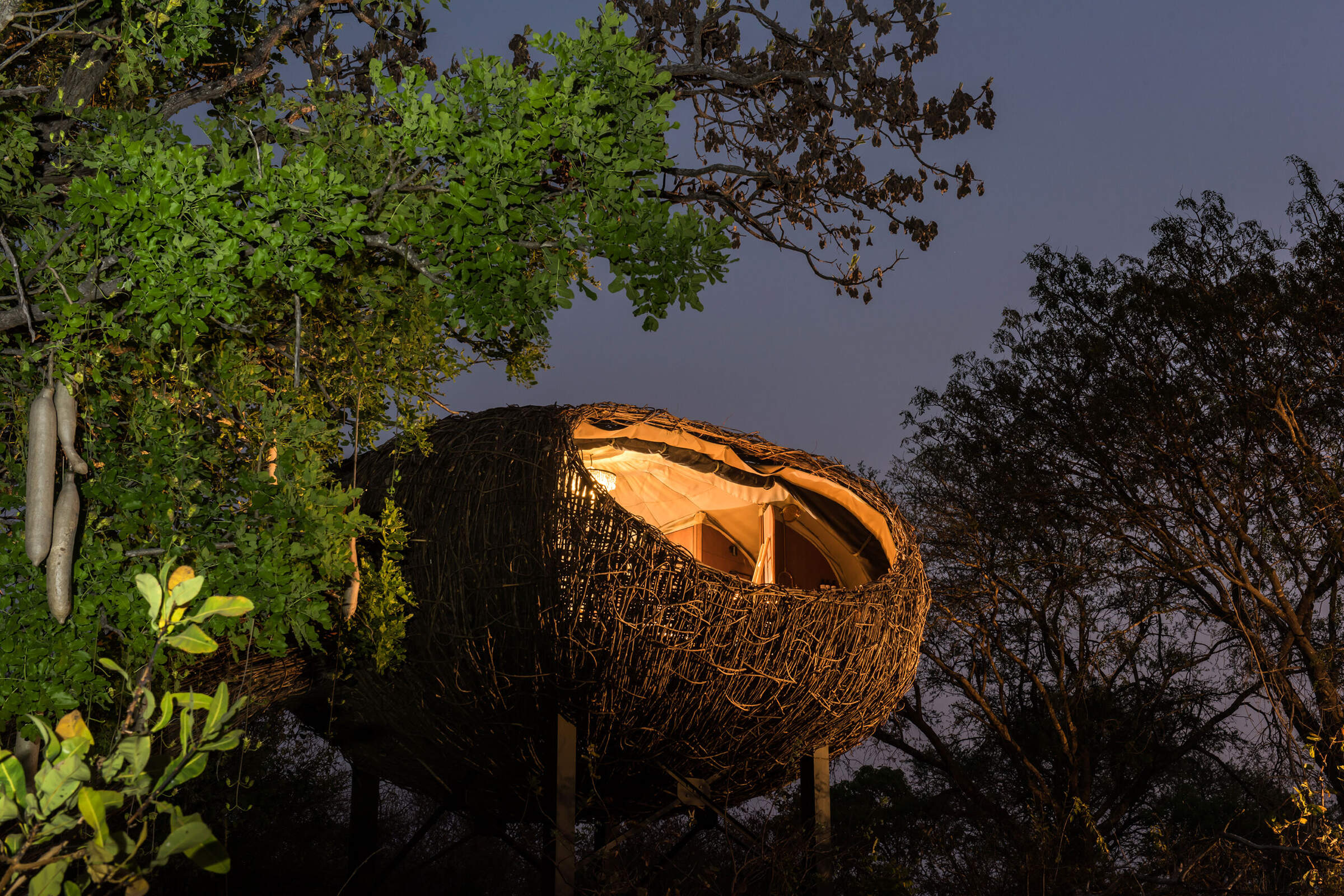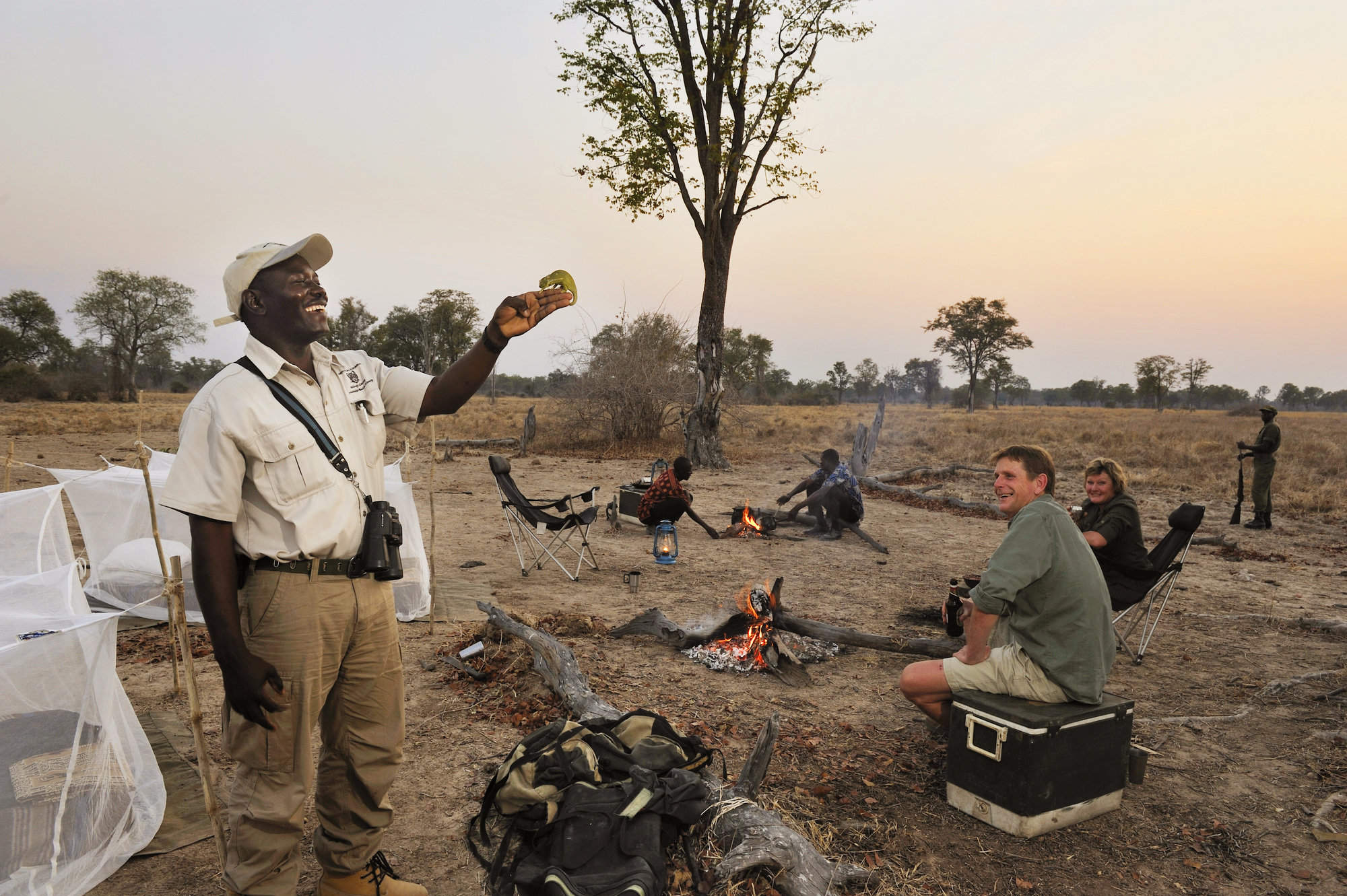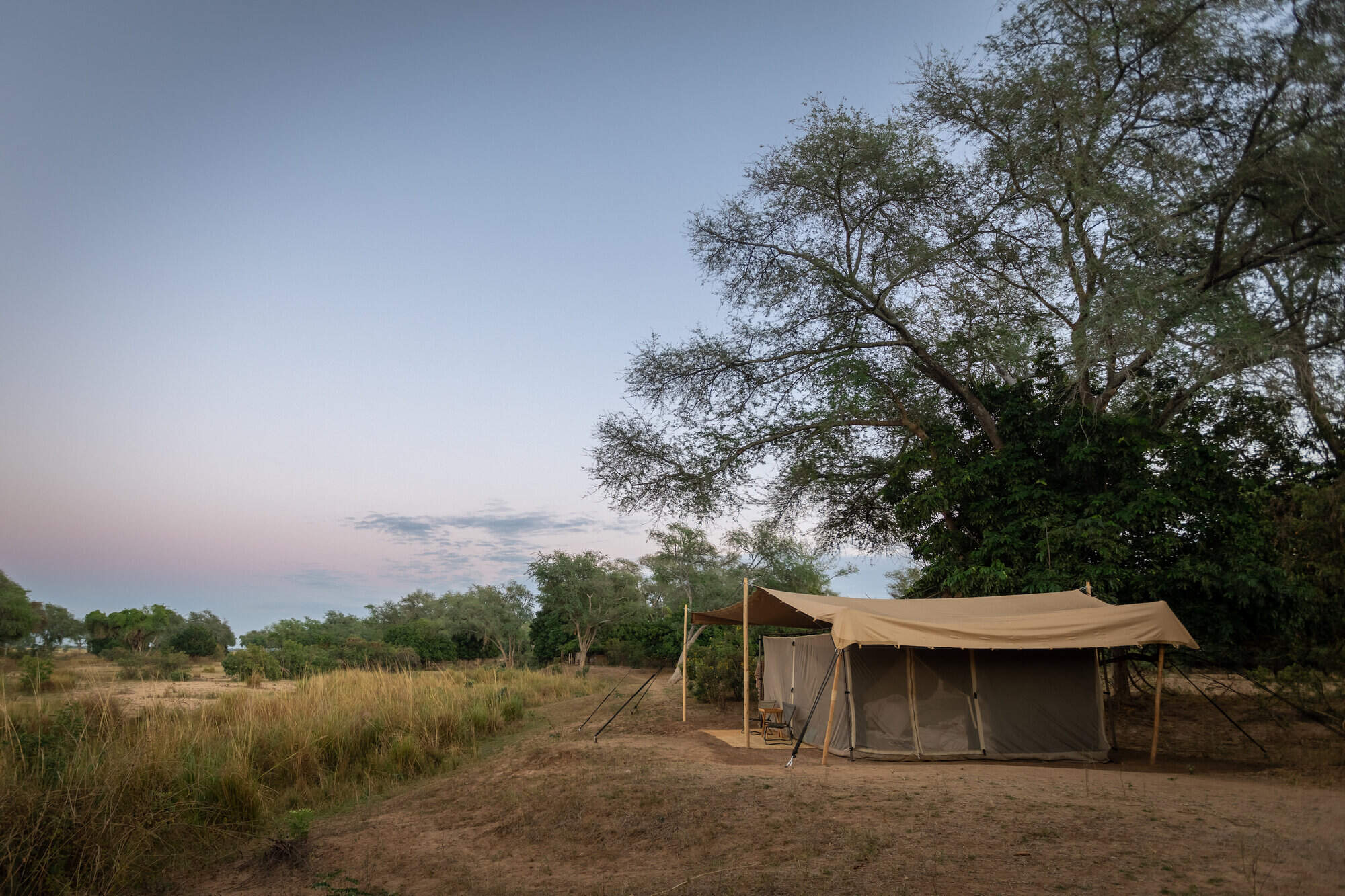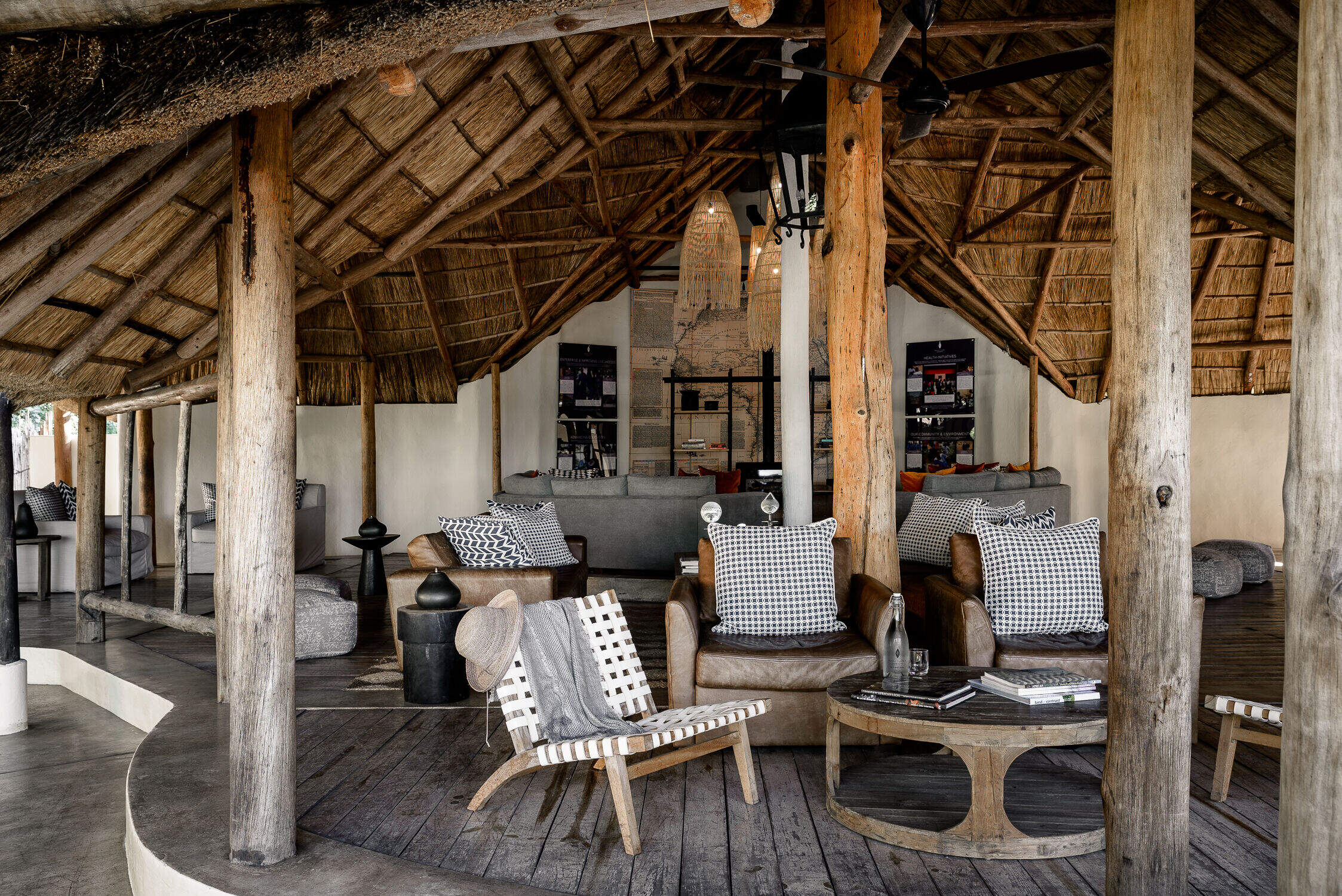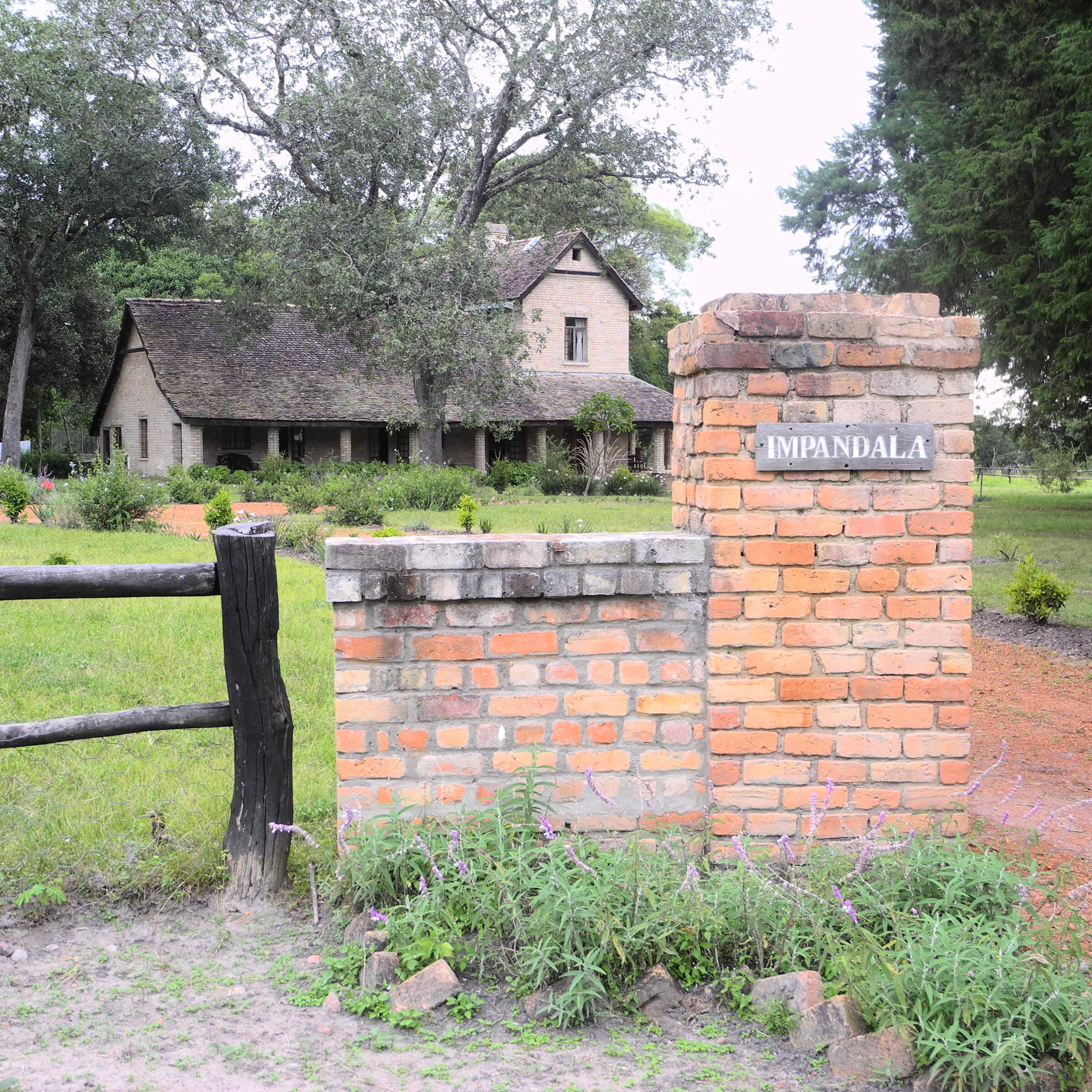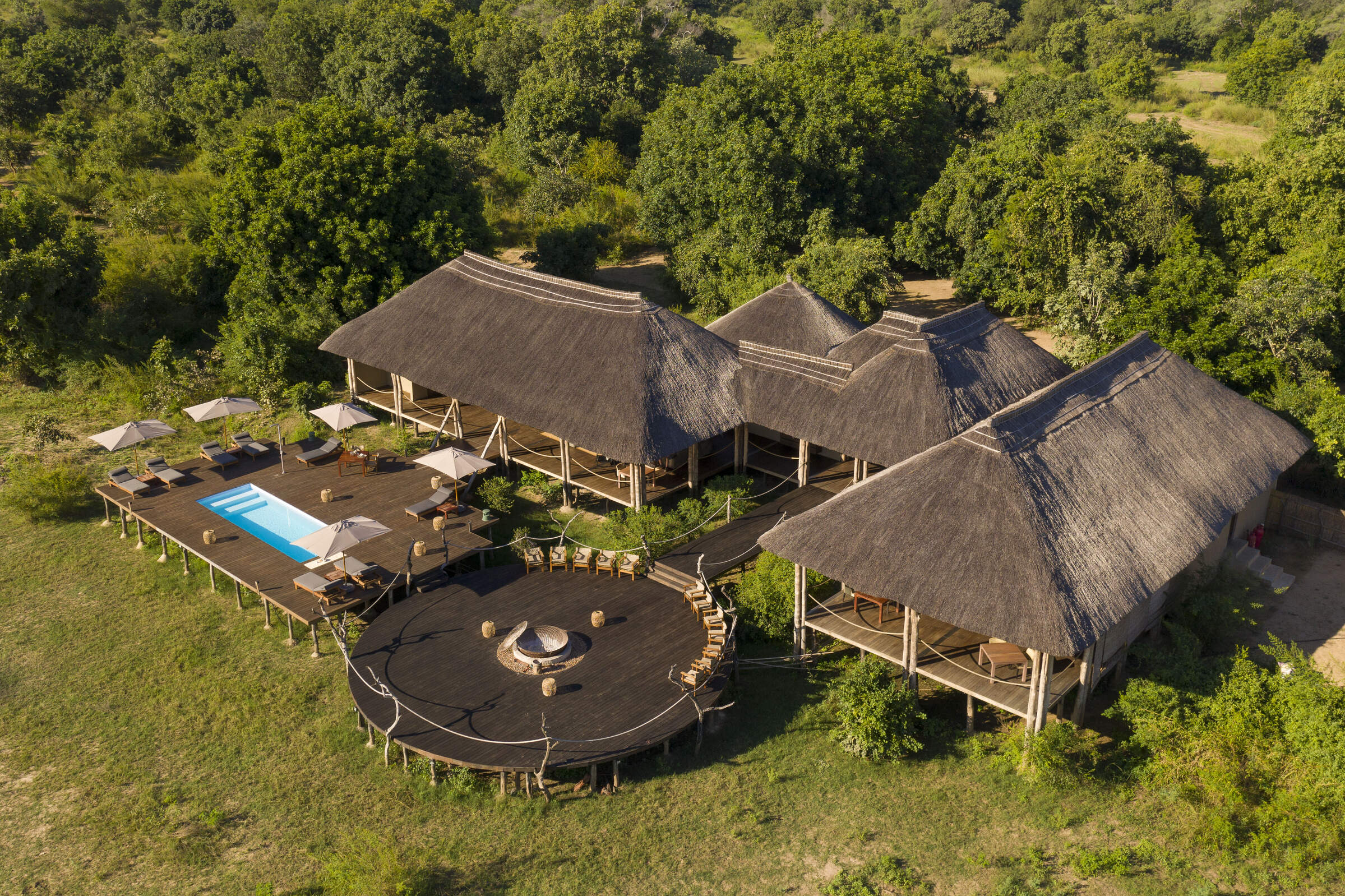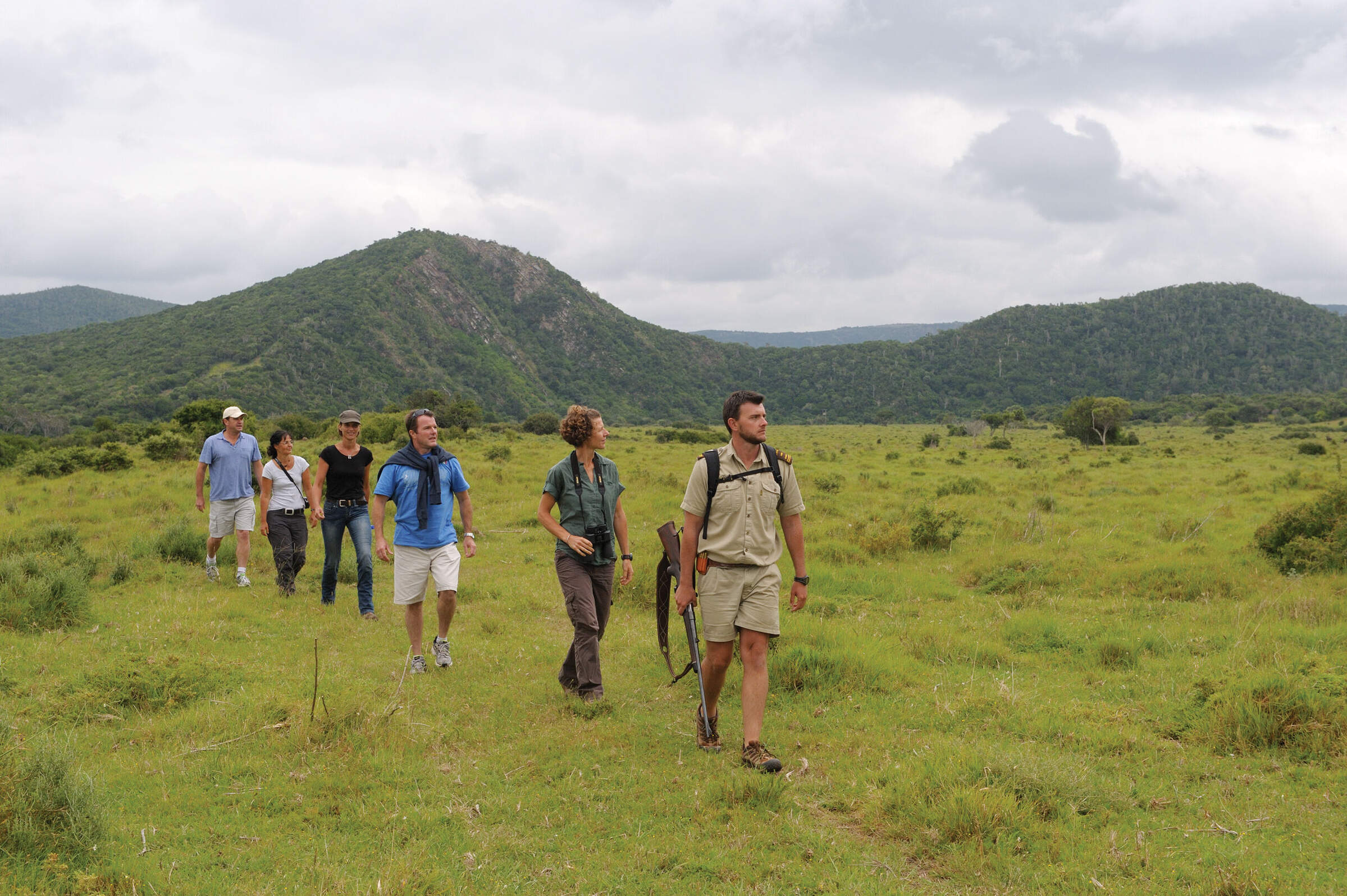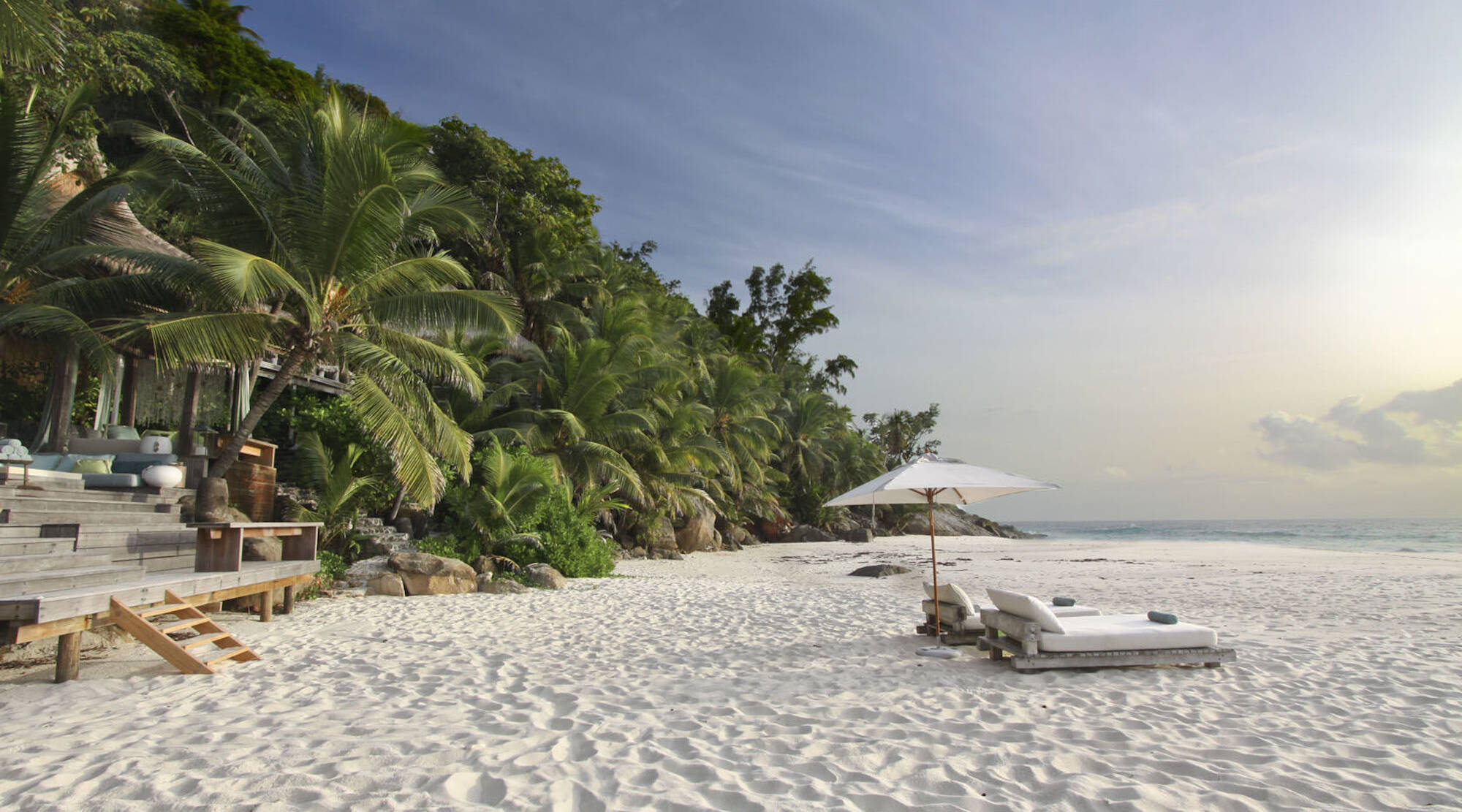Zambia Safaris
Like the butterfly that it resembles, Zambia is by turns flamboyant and shy – its showy attractions overshadowing more hidden gems.

While the splendour of the Zambezi plunging over the Victoria Falls draws visitors by the thousand, lesser-known rivers tumble over rocky outcrops or cascade down deep fissures in the Rift Valley to create their own natural beauty, far from the crowds.
Fanning out from the rivers comes the wildlife, protected within some of Africa’s top national parks. Firmly established are the Lower Zambezi and the South Luangwa, whose permanent water sources are a magnet for animals, especially towards the end of the dry season.
Yet wildlife is not confined to these parks. Consider the raw wilderness of the vast Kafue, the remote North Luangwa, or the truly off-grid Liuwa Plain, the ancient hunting grounds of the King of Barotseland.
Make your way to Kasanka for the annual bat migration, or to the Bangweulu Wetlands, whose papyrus swamps harbour the prehistoric-looking shoebill. The variety of wildlife is astonishing.
Thrills, too, come in many guises. Think walking safaris with some of the best guides in the world, soaring in a microlight over Livingstone’s “Flight of Angels”, or canoeing down the Zambezi, the waters teeming with hippos and crocodiles.
Then discover Shiwa Ng’andu, where rampant stone lions guard an English country house, complete with a royal lake. Or contemplate the simple stone cross marking the spot where David Livingstone’s heart is buried. Hidden gems indeed.
Zambia’s key safari areas
Top of the bill is South Luangwa National Park, which offers superb big-game safaris, day and night, plus some of Africa's best walking safaris. Explore from intimate, often privately-owned lodges with some of the best safari guides in the world.
Justifying double billing, the Lower Zambezi National Park sits beside the broad, languid Zambezi River. Come for boat trips, canoeing and great fishing, as well as game drives and walking safaris, all based at intimate safari camps fringing the riverbank.
Higher, cooler and less developed is Kafue National Park, home to species like cheetah that are rare elsewhere in Zambia. Worth including in any trip to this park is the highlight: Busanga Plains.
For a very adventurous element to a Zambian safari, consider the more remote North Luangwa National Park. Sought out by safari addicts, it has just a handful of tiny bushcamps that focus almost exclusively on walking safaris.

South Luangwa
39 places to stay
Plentiful wildlife and excellent birding combine with walking safaris, night drives and a range of lodges to underpin Zambia’s flagship national park.

Lower Zambezi
14 places to stay
A lifeline for wildlife, and an unbeatable backdrop for a safari, the majestic Zambezi River is the key to this exceptionally scenic park.
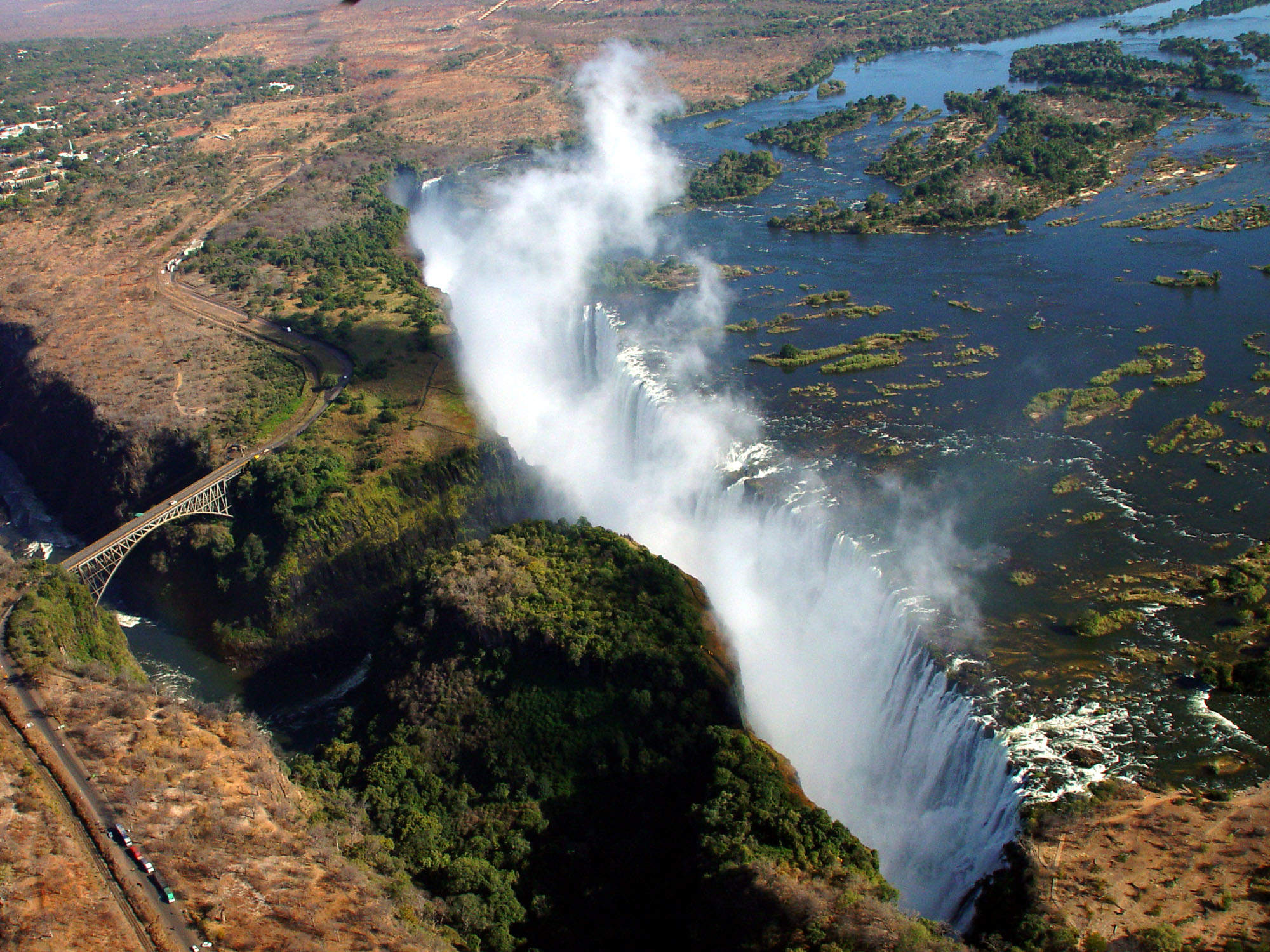
Livingstone
13 places to stay
Named after the legendary explorer, Livingstone is a must – for the Victoria Falls, for adrenalin-fuelled fun, or for sheer self-indulgence

Kafue
10 places to stay
Vast in size, diverse in landscape, varied in wildlife: the Kafue rewards those who are prepared to travel around.

Lusaka area
6 places to stay
Overlooked by most visitors, Zambia’s capital is an intriguing blend of creature comforts and vibrant culture – as witnessed in its colourful markets.
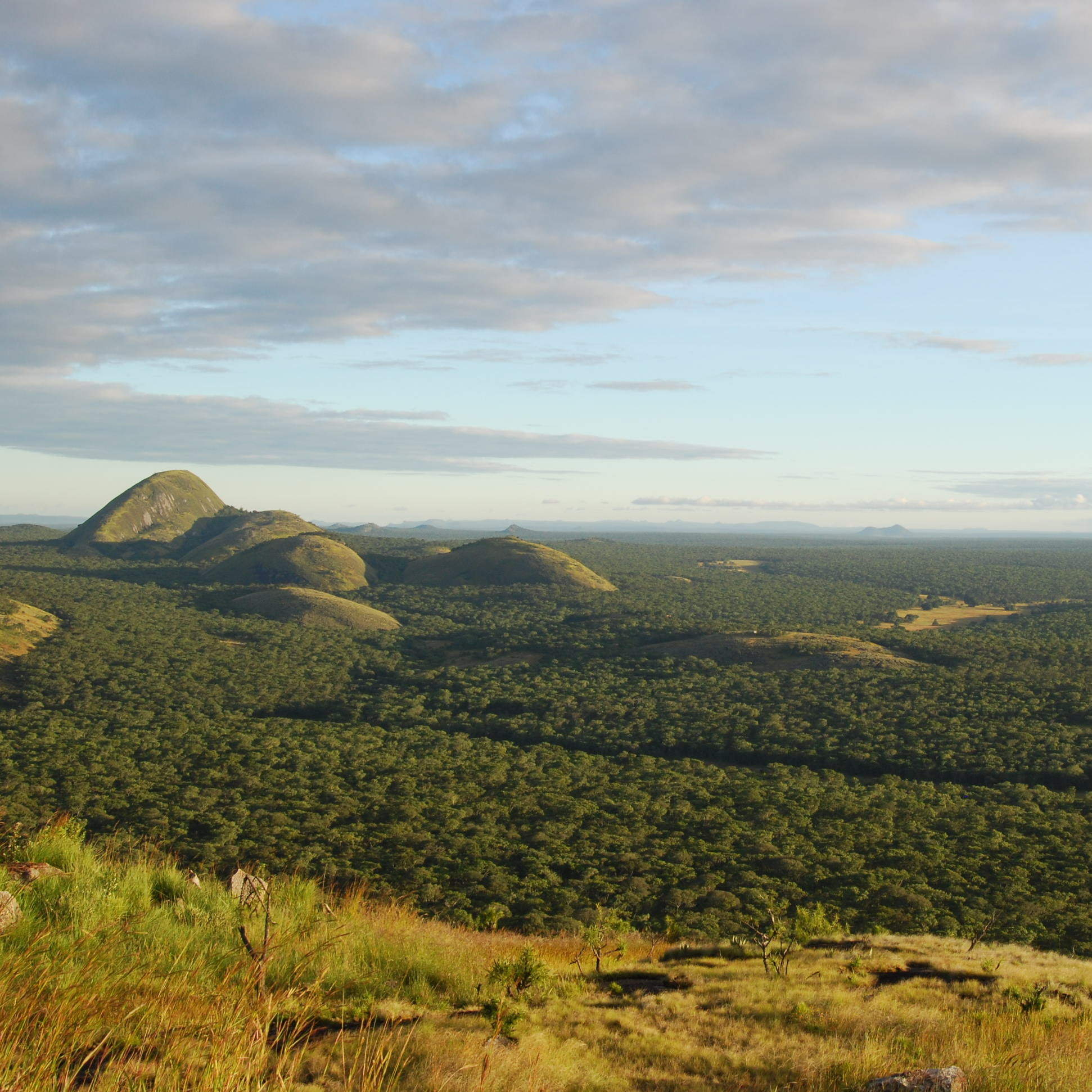
Northern Zambia
6 places to stay
Lakes and waterfalls, bats and shoebills, even a grand stately home: the rarely visited north is a world apart from the rest of Zambia.

Liuwa Plain
3 places to stay
Isolated, remote and wild, Liuwa attracts wildebeest and zebra in their thousands, an extraordinarily rich birdlife – and very, very few visitors.

North Luangwa
2 places to stay
Wild, open, and firmly the domain of walking safaris, North Luangwa is a world away from its popular sibling to the south.
Ten top safari holidays in Zambia
To give you a taste of the options, we have pulled together ten suggestions for the perfect holiday to Zambia.
Ranging from five to 11 days, they feature all-inclusive safari lodges, excellent guiding and the incredible diversity for which Zambia is renowned – from the big predators of the national parks to adrenalin-fuelled walking safaris to the added bonus of the Victoria Falls.
As all our trips are tailor-made, these are just ideas. Whatever your interests – whether it’s taking in the country’s highlights or marvelling at the extraordinary fruit-bat migration, paddling a canoe along the great Zambezi or seeking out the remote Liuwa Plain – take a look, then give us a call and let us help you create your perfect safari.
Our travellers' 10 most recent Zambia safari reviews
We place considerable store on feedback from our travellers. Many of them kindly send us reviews of their trips and the places that they visit, and these in turn become an important part of the way we work.
They help us and our travellers to plan their trips; they're integral to keeping us bang up to date; and they're eagerly read by the lodges in Africa, who appreciate honest and constructive feedback that is guaranteed to be genuine.
All reviews of our Zambia holidays are published in full without us editing them. See all 1305 safaris reviews here, or click on a card below to read one of our most recent reviews in full.
Our travellers' wildlife sightings in Zambia
We suggest to our travellers that they keep a record of their sightings of key species, including the big cats, wild dog, buffalo, elephant, giraffe, hippo, hyena, zebra and various antelope.
Many of them find this an enjoyable part of their trip, and are happy to share their information with us after their safari adventure.
In turn, their feedback helps us to build an unparalleled picture of when and where Zambia’s key wildlife species are to be found: citizen science in action. Read how this survey works. Analysing this information enables us to present a unique picture of the likely chance of sighting these key animal species on your Zambia safari. Click on a species to find out more. For much more detail, see our interactive map showing the best locations for wildlife species in Zambia.

96% success

95% success

94% success

89% success

87% success

84% success

80% success

78% success

43% success

41% success

30% success

13% success

13% success

10% success

7% success

7% success

3% success

3% success

1% success
Where to find Zambia’s key wildlife species
Whenever our travellers to Zambia tell us of their wildlife sightings, it helps to improve our understanding of where and when you’re more likely to see the key animal species.
You’ll find the results of this research in many ways on our website – under the individual camps, on our dedicated wildlife pages, on our maps, and on our individual holiday pages.
So whether you’re in search of giraffe or wild dogs, or the elusive leopard is high on your wishlist, we can help. Take a look at our data-driven maps to find out the best places to seek them out amongst the abundant wildlife that roams Zambia’s national parks.
For a map of the best camps and lodges for sightings of an individual species, click on a card:
When to go on a Zambia safari holiday
Most visitors to Zambia come between June and October, when the land is drying out after the rains and animals are seeking out water.
With days becoming hotter, and relatively cool nights, this is the most expensive time of year for a safari, and the only time for a walking safari at one of the small walking bushcamps.
November, April and May, the so-called “shoulder” season months when the weather is less settled, are quieter in terms of both visitors and wildlife, and costs are generally more moderate.
At the other end of the scale is the rainy or “emerald” season, broadly in December, January and February, when rates at camps that remain open are usually lower. At the peak of bird migration season, and with clear light, this can be an ideal time for birders and photographers.
Read more about Zambia’s weather and climate here.
Jan
Feb
Mar
Apr
May
Jun
Jul
Aug
Sep
Oct
Nov
Dec
Zambia in January
At the peak of Zambia’s rainy season, you can expect heavy rainfall for a few hours most days, with sunny spells in between. Temperatures remain high, reaching over 30ºC, with high humidity. The rainfall is yet to make a significant difference to the Victoria Falls, and the flow of water here remains low. The landscapes are green and lush and the air crystal clear, but with the abundance of water the wildlife disperses, and the thick bush can restrict sightings. It severely limits walking safaris too. Migrant birds boost the species count at this time.
With seasonal rivers in flood and dirt roads and airstrips unusable, many camps in Zambia become inaccessible, and close. Only a few lodges in the central Kafue and the South Luangwa remain open. Few people visit in January, so the parks are incredibly quiet and the camps charge their lowest rates.
- Peak of rainy season: hot & humid, with rain for a few hours most days
- Majority of camps closed throughout the month
- Bush incredibly green & lush, with clear air – great for photography
- Big game dispersed & thick bush makes sightings difficult
- Very few visitors: the cheapest time to visit
Our view
This is not a great time to visit
Weather in January
Zambia in February
February remains in the heart of the rainy season, with dramatic thunderstorms delivering a few hours of rain most days, interspersed with clear sunny skies. There is still an abundance of water in the environment, dispersing game and closing camps. With the thick bush, game viewing is limited and walking safaris restricted, but the swollen rivers allow some activities that would be unavailable in the dry season, such as boat trips on the Luangwa River.
After a couple of months of rain, water will once more be making its way to the Zambezi River, and the flow of water over the Victoria Falls will start to pick up.
Visitor numbers and costs at the few open camps remain low.
- Peak of rainy season: hot & humid with rain for a few hours most days
- Most camps closed throughout the month
- Bush lush & green: good for photography but poor for game viewing
- Very few visitors, & the cheapest time to visit
- Water levels at Victoria Falls still low, but starting to pick up
Our view
This is not a great time to visit
Weather in February
Zambia in March
March is the last month of the rainy season in Zambia, and there are still heavy downpours most days. Water levels are at their highest making it difficult to get around the country. Temperatures still reach over 30ºC most days, too, with the rain causing high levels of humidity.
Many camps remain closed, and the thick bush limits game viewing and walking safaris. However, many animals are raising young at this time of year, with predators taking advantage of the easy prey, so sightings can be incredible, if sporadic. Wild dogs in the South Luangwa are particularly active at this time of year. With clear air and increasingly frequent blue skies as a backdrop, photography can be spectacular. The birding remains excellent as thousands of birds prepare for their winter migration.
- Peak of rainy season, hot & humid, with rain for a few hours most days
- Majority of camps closed throughout the month
- Bush remains green & lush: good for photography but poor game viewing
- High abundance of animals with young
- Very few visitors, & the cheapest time to visit
Our view
This is not a great time to visit
Weather in March
Zambia in April
As the rains change from intense downpours to lighter and sporadic showers, April is very much a transitionary period in Zambia. The landscape remains exceptionally green and lush, with sparse viewing of larger wildlife.
Although camps start to reopen in April, most remain closed, and others that were open at the start of the year may shut to prepare for the coming dry season. This is the first month of the year when it’s possible to visit the Lower Zambezi.
The Zambezi River will be at its highest level with the Victoria Falls in full flow, but with huge amounts of spray kicked up views of the waterfall are often obscured.
- Tail end of the rainy season; hot & humid with light rain most days
- Some camps reopen; possible to visit the Lower Zambezi
- Bush still green & lush: good for photography; poor for game viewing
- Victoria Falls in full flow but with poor views
- Very few visitors, & the cheapest time to visit
Our view
This is not a great time to visit
Weather in April
Zambia in May
May is typically the first month of the dry season. While there is the chance of an odd shower, the majority of days are clear and sunny. As winter approaches, temperatures start to drop, with most days reaching highs of around 26ºC.
As the landscape dries out, access to the parks improves, and all but the most remote bushcamps reopen. After five months of rain there is still a lot of standing water, but despite the thick bush May marks a distinct improvement in game viewing, and clear air is a continuing bonus for photographers.
The end of the month can be a popular time for visitors, taking advantage of typically good weather, improved game viewing, and the last of the low-season rates offered by the camps.
- Start of the dry season in a typical year, with mostly clear & sunny
- Majority of camps open
- Bush still green & lush, with clear air for photographers
- Game viewing starts to improve
- Last month of low rates at the camps
Our view
A good time to visit, with pros & cons
Weather in May
Zambia in June
Zambia sees virtually no rainfall in June, with a strong chance of sunny days throughout. The humidity drops dramatically and, as winter approaches, temperatures reduce, falling to around 10ºC at night but still warming to 25ºC during the day.
The landscape remains lush but the bush starts to die back significantly, improving visibility for game viewing and walking safaris. All the camps in the South Luangwa and Lower Zambezi are open by the start of June. While some have a ‘shoulder season’, others start charging their highest rates.
The water coming over the Victoria Falls starts to recede, reducing the mist and spray kicked up, providing better views of the waterfall itself.
- Reliably sunny days, but dropping temperatures, especially at night.
- All camps in the South Luangwa, southern Kafue & Lower Zambezi open
- Wildlife viewing continuing to improve
- Increased visibility & cool weather perfect for walking safaris.
- Viewing of the Victoria Falls at its best
Our view
A very good time to visit
Weather in June
Zambia in July
As the dry season continues, vegetation and long grasses have mostly died back and water starts to become scarce. Wildlife starts to cluster around the major sources of water and the game viewing approaches its best.
July is the first month of winter, and while daytime temperatures are in the 20s Celsius, temperatures at night can drop to single digits. Early morning and late evening drives in open vehicles are particularly cold, and blankets and hot water bottles are often provided.
Visitor numbers increase significantly and space at popular/small camps can get tight. Nearly all properties are now charging their highest rates. Even floodwaters on northern Kafue’s Busanga Plains have now receded, and all camps in Zambia are open.
- Warm, dry days; cold, crisp nights
- Significantly improved game viewing
- Walking safaris are unrestricted by vegetation, with good temperatures
- Approaching peak season, so significant increase in costs
- Northern Kafue now accessible
Our view
A very good time to visit
Weather in July
Zambia in August
By August, the vegetation has died back and wildlife is now congregating around the remaining water sources, providing excellent game viewing. With virtually no chance of rain you are almost guaranteed sunny days, although dust and smoke in the air means a visible haze starts to appear on the horizon.
Temperatures can drop below 5ºC at night but climb to the 20s Celsius during the day. Jackets and gloves are recommended for morning and evening drives. This is one of the most popular – and most expensive – months to travel. European school holidays have little impact on travel within Zambia, but they do increase international flight costs, and all camps are charging their highest rates.
- Very dry with warm days but cold nights
- Excellent wildlife viewing, as animals congregate around water holes.
- Haze developing on the horizon, potentially affecting photographs
- Cool temperatures & clear sightlines: ideal for walking safaris
- Peak season: camps & flights at their most expensive
Our view
Fantastic: the very best time to visit
Weather in August
Zambia in September
September is the most popular, and arguably the best, time of year to travel. Rain is almost unheard of so humidity is low, and temperatures are starting to climb. Morning drives are more comfortable, with daytime temperatures normally in the low 30s Celsius.
Water is scarce, so wildlife clusters around the few remaining sources. Game viewing is very nearly at its best, with a good chance of seeing interactions between species. Camps are charging their highest rates and are at their busiest, with popular camps often fully booked more than a year in advance.
A significant haze sometimes appears on the horizon, impacting on landscape views and affecting photography. Depending on the rainfall in the wet season, the Victoria Falls can start looking dry, with more cliff face than waterfall on show.
- Dry hot days with clear skies, & warm nights
- One of the best months for wildlife viewing
- Dust & smoke creates a haze over the landscape
- Peak season: camps are expensive & often full
- Victoria Falls starting to look dry
Our view
Fantastic: the very best time to visit
Weather in September
Zambia in October
As the dry season peaks, the landscape in October is brown and barren, with little ground-level vegetation, though the promise of rain may bring the occasional shower. Temperatures can be uncomfortably hot, reaching over 40ºC in the daytime and rarely dropping below 20ºC at night. This is particularly challenging on walking safaris and in camps without air conditioning.
A thick haze on the horizon sometimes turns photographic backgrounds grey-brown rather than sky-blue. The lack of water sees hippos and crocodiles cram themselves into the few remaining shallow rivers, with other wildlife carefully skirting around them in order to drink. Game viewing is at its absolute best, and you’re most likely to see hunts in October.
On the Zambian side, stretches of the Victoria Falls become a dry cliff face.
- The best month for wildlife viewing
- Very hot both night & day, with little chance of rain
- Air can be very hazy with dust & smoke, so not great for photography
- Victoria Falls largely dry on Zambian side
- Camps less busy & some start to drop their rates
Our view
A very good time to visit
Weather in October
Zambia in November
November typically marks the end of the dry season. Although the timing of the rains is always uncertain, temperatures remain reliably high and the humidity builds as the rains approach.
While you may avoid the rains in the first week of November, it’s not unusual to see some spectacularly heavy thunderstorms, followed by an explosion of green growth. Wildlife disperses rapidly after the rains, no longer restricted to limited waterholes closely monitored by predators. However, Kasanka’s bat migration is at its peak, and wildebeest gather on Liuwa Plains.
Many remote camps close, and those that remain open significantly drop their rates. The initial rains have little impact on the Victoria Falls, but do significantly reduce the atmospheric haze.
- Typically the start of the wet season; very hot and humid
- Increased chance of heavy rain as the month progresses
- Greatly diminished game viewing once the rains arrive
- Bat migration in Kasanka, and wildebeest migration in Liuwa
- Camp rates lower, & visitor numbers reduced
Our view
A good time to visit, with pros & cons
Weather in November
Zambia in December
December is typically the first month in Zambia’s rainy season, with heavy thunderstorms most days interspersed by sunny spells. Temperatures start to fall, but still reach over 30ºC in the daytime, with high levels of humidity.
As the rainfall increases it brings plentiful water into the landscape, encouraging the growth of thick green vegetation. Wildlife remains in the national parks and sightings are possible, but overall game viewing is poor. Access to the parks becomes problematic and all but a handful of camps around the entrance to the South Luangwa and the centre of Kafue national parks close. Those that do remain open charge their lowest rates and are very quiet.
The rain removes any smoke and dust from the air, returning the sky to a dazzling blue that is great for photographers.
- Start of rainy season, with hot, humid & wet days
- Poor game viewing as wildlife disperses & bush thickens
- Majority of camps close; others charge their lowest rates
- Landscape green with blue skies; photographic opportunities improve
- Victoria Falls still dry
Our view
This is not a great time to visit
Weather in December
Country guide
A guide to visiting Zambia
For many travellers, Zambia is known primarily for the grandeur of the Victoria Falls, yet a safari in Zambia is no mere add on.
Threaded with permanent rivers that prove a magnet for animals, Zambia is home to an enticing network of national parks, often less visited than their counterparts in Botswana, Tanzania or Kenya, and some considerably wilder.
While traditional wildlife safaris with great guiding are the mainstay of safari holidays in Zambia, the option of top-class walking safaris is an added bonus.
Night drives are a further draw, permitted in all of Zambia’s national parks, and affording the opportunity to see a broader range of animals, from the amusing porcupine to the normally elusive leopard. And creature comforts come courtesy of small safari lodges, many of them still owner-run and highly individual.
How to safari in Zambia
Standards of guiding, service and food are almost universally high, whether you’re staying in a seemingly rudimentary bushcamp or in one of the more structured lodges. The difference is one of focus.
While all will offer the chance to sit and chat around a campfire, the more luxurious options offer increasing levels of sophistication, a greater variety of cuisine and extras that may range from swimming pools and gyms to hedonistic spas.
At the other end of the scale you’ll find small, intimate bushcamps where meals may be prepared over an open fire and the emphasis is on the adventure of walking safaris.
How to get around on a Zambia safari
When moving from one camp to another in the same national park, you’ll often be transferred by 4WD – which effectively becomes an extra game drive. In some specialist walking camps in the South Luangwa, you may even be able to walk between the camps.
What to expect from a Zambia safari lodge
Almost all safari camps have en-suite rooms or tents, most with flushing toilets and running water. The simplest may be constructed largely of reeds; others will be tented in concept, while in some you’ll find permanent structures of wood or stone, with glazed windows. Yet wherever you are, standards are generally very high – so even where mod cons are apparently lacking, you’ll still have hot water on call and exceptionally well-designed toilet facilities!
Why choose a walking safari in Zambia – and where
While most Zambian camps offer walking safaris, we at Expert Africa have our personal favourites, and we’re here to help you choose. For many of our travellers, the South Luangwa remains unrivalled.
That said, few Zambian national parks can compete with the North Luangwa for walking. The sprinkling of visitors that make it to this area are rewarded with a handful of small intimate bushcamps whose guides specialise in exploring this remote wilderness on foot.
But wherever you choose to go, be aware that exploring the wilderness on foot can be heart-stopping – and highly addictive!
Zambia in context: history, environment & people
Geographically, Zambia is dominated by a high, undulating plateau, deeply incised by the great valleys of the Zambezi, Kafue, Luangwa and Luapula rivers, which in turn form the backbone of the country’s flagship national parks. While tourism in much of Zambia is still only in its infancy, these parks – and their international visitors – bring both employment and an income to the local people, and a solid reason for the conservation of wildlife.

Understanding more about travel in Zambia
Travelling to and around Zambia is a joy, especially with our team of specialists behind you, but it always helps to understand a little of what to expect.
Whether you’d like to know more about international and internal flights to and around Zambia, or need a quick fact-check on things such as currency and language, read on. Read, too, about Zambia’s attitude to LGBT travellers, and check out our advice on the sometimes complex subject of tipping.

Flights to Zambia
While we rarely arrange flights to Zambia for our travellers, as booking direct with the airlines is less expensive, we will organise a seamless itinerary that fits with your flight schedule.
From the UK, there are no longer any direct flights to Zambia, so the best options are to fly with Emirates, Qatar Airways or Ethiopian Airlines, all of which have connecting flights from London (and many mainland European cities) to Lusaka. Ethiopian Airlines also operates a flight via Addis Ababa to Livingstone.
It is also possible to fly with British Airways via Johannesburg, connecting with an onward flight operated by their subsidiary, Airlink, to Lusaka.
Travellers from the USA can fly with United Airlines via Johannesburg, or with Emirates via Dubai.
For internal flights, Zambia’s domestic airline, Proflight, operates regular flights between the Zambian capital and the country’s safari destinations, including the South Luangwa.


Zambia general information
Zambia’s currency is the Zambian kwacha (ZMW), but most safari camps and other tourist venues charge in US dollars, or UK pounds. Most will also accept credit cards, albeit at a surcharge, so if you’re heading on safari, you’re unlikely to need any kwacha.
The country's official language is English, which is spoken by most people. Beside this, there are more than 70 different dialects spoken in Zambia, with the most common being Bemba; Bemba is also used for administration and education.
Many travellers require a visa for Zambia, but at the time of writing (April 2024) most passport holders can obtain these on arrival, either free of charge or using UK pounds or US dollars cash.


Lesbian, Gay, Bisexual and Transgender (LGBT) travel to Zambia
In the 30 years or so that we have been organising trips to Zambia, we have never heard of any problems experienced by our LGBT travellers due to their sexuality, and some have returned to the country several times.
We believe this reflrects the general culture in Zambia, where the majority of people are friendly and welcoming, and care little about a visitor’s gender or sexuality. In our experience, LGBT travel to Zambia has proved to be safe and uneventful.
However, we believe it’s important for our travellers to be aware of the current laws in the country, and the opinion of the general population, so do please check your government's latest travel advice before you go.


Tipping in Zambia
The most important thing to remember about tipping in Zambia, as in many other countries, is that it’s voluntary – and should depend on the standard of service.
While we would encourage our travellers to tip in recognition of good service, we’d ask you to bear in mind that excessive tips can throw out the balance of the local economy.
Deciding who to tip, and when, is as important as how much. Behind every successful safari is a dedicated team of staff who work hard to ensure that you enjoy your trip. It makes sense, then, to consider tipping them as well as your guide and waiter.
Usually we recommend tipping just once, at the end of your stay. Many lodges have a staff tip box, but you could also place tips in a labelled envelope or series of envelopes to prevent any misunderstanding.

Zambia safari holidays
In our experience, many Zambian areas remain fairly “wild”, and many of its camps are still firmly in the “authentic” bracket, making this exceptional country a truly rewarding choice for a safari holiday.
Zambia’s small safari bush camps – some still owner-run – are renowned for their warm hospitality and great walking safaris. In all the main national parks, you’ll also find some of Africa’s best safari guides, thanks to their exceptional standards of guide training.
North and South Luangwa, in particular, are renowned for top-class walking safaris, whilst the Lower Zambezi National Park offers superb boat trips on the Zambezi River. Add in the Victoria Falls, one of the seven natural wonders of the world, and you have the makings of an unrivalled safari.
Take a look through our selection of safari holiday suggestions below, then call us, so that one of our Zambian experts can help you to design your own personal trip.

Scrub Hare Safari
7 days • 3 locations
LUSAKA AIRPORT TO LUSAKA AIRPORT
Camps run by welcoming owners with a passion for their environment are rare, and Tafika is one of the best. Combine this with walking safaris at equally excellent bushcamps for the best of the South Luangwa.
US$6,040 - US$7,210 per person

Perekani Walking Trail
10 days • 5 locations
LUSAKA AIRPORT TO LUSAKA AIRPORT
Five smart but rustic bushcamps are the comfortable staging posts for this walking safari in South Luangwa. The route offers outstanding seclusion and rich wildlife with top-quality guiding throughout.
US$9,250 - US$11,500 per person

Boehm's Zebra Safari
7 days • 2 locations
LUSAKA AIRPORT TO LUSAKA AIRPORT
This safari combines two high-quality owner-run camps in a very productive region of the South Luangwa. The guiding is excellent and with its hides this safari is perfect for serious photographers.
US$7,130 - US$9,410 per person

Hyena Safari
11 days • 4 locations
VICTORIA FALLS AIRPORT TO LILONGWE AIRPORT
Mix relaxation and adventure on a safari combining the South Luangwa with Victoria Falls and the beaches of Lake Malawi. These three locations are among the most iconic in southern Africa.
US$8,630 - US$11,910 per person

Crawshay's Zebra Safari
10 days • 4 locations
LUSAKA AIRPORT TO LUSAKA AIRPORT
This superb safari combines two of Zambia’s best national parks, the South Luangwa and the Lower Zambezi. The camps are small and high quality with excellent safari guides.
US$9,760 - US$13,820 per person
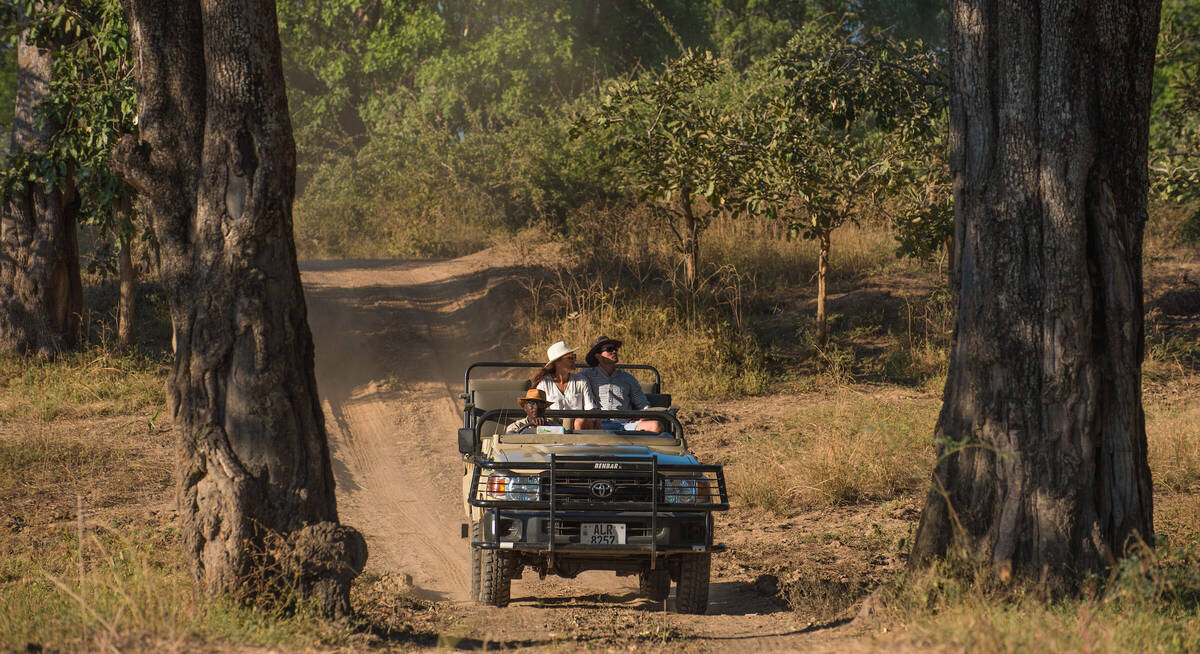
Hippo Safari
9 days • 4 locations
LUSAKA AIRPORT TO LIVINGSTONE AIRPORT
Combining excellent game with aspects of remoter safari in South Luangwa, as well as the cultural delights of Livingstone, this trip also makes use of long-stay discounts, making it an excellent-value and well-rounded adventure.
US$7,480 - US$8,820 per person

Robin Pope Walking Safari
7 days • 3 locations
LUSAKA AIRPORT TO LUSAKA AIRPORT
The definitive, original mobile walking safari; explore the remote north of the South Luangwa on foot while staying in a simple mobile camp that moves with the group.
US$6,500 - US$7,870 per person

Giraffe Safari
9 days • 3 locations
LUSAKA AIRPORT TO LUSAKA AIRPORT
A safari to the remotest parts of Zambia’s Luangwa Valley. Perfect for experienced safari goers and first-time Africa adventurers. Explore with expert guides whilst staying at small bushcamps.
US$8,390 - US$9,740 per person

Slender Mongoose Safari
5 days • 2 locations
LUSAKA AIRPORT TO LUSAKA AIRPORT
A detailed exploration of Lower Zambezi from two top-notch sister camps, each in a prime location in the national park. Expect a high level of care, first-class guiding and superb wildlife.
US$6,270 - US$8,400 per person
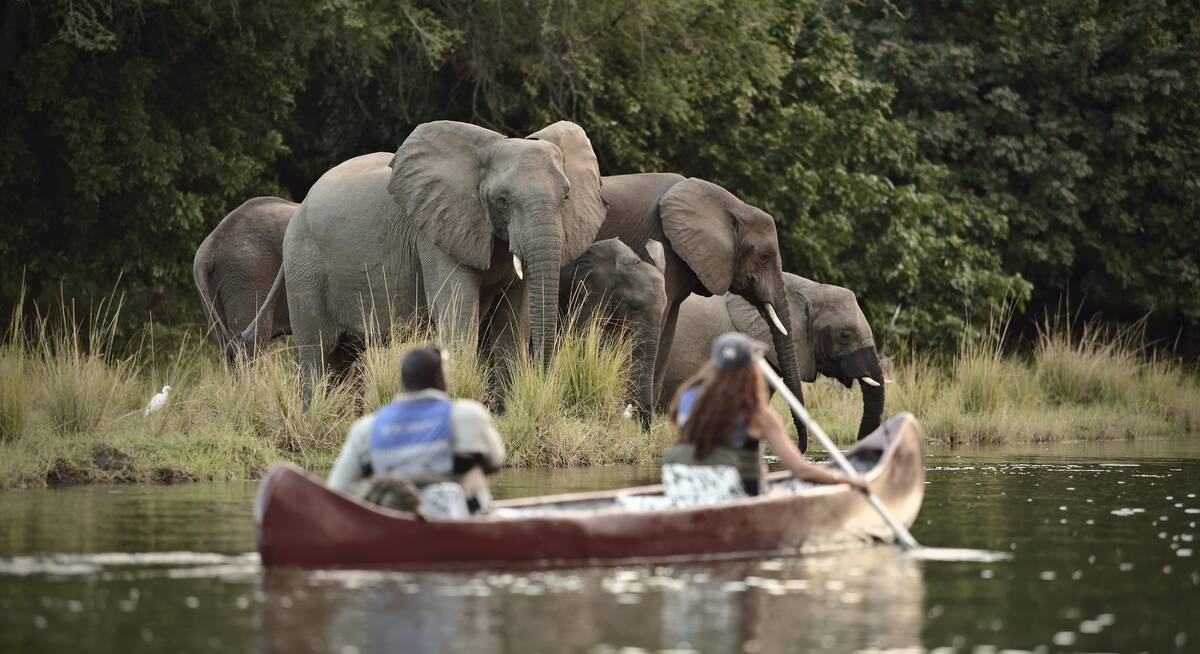
Duiker Safari
10 days • 3 locations
LUSAKA AIRPORT TO LUSAKA AIRPORT
Three luxurious bushcamps in stunning riverside locations, split between the South Luangwa and Lower Zambezi national parks, offer a wide variety of expert-guided safari activities in stunning game-rich environments.
US$8,060 - US$10,020 per person

Vervet Monkey Safari
7 days • 2 locations
LUSAKA AIRPORT TO LUSAKA AIRPORT
Explore the world-class wildlife of Zambia’s South Luangwa and Lower Zambezi national parks in considerable luxury, guided by experts from two sister camps renowned for their excellent level of care.
US$8,370 - US$10,990 per person

Fruit Bat Safari
6 days • 2 locations
LUSAKA AIRPORT TO LUSAKA AIRPORT
Offering a highly specialised experienced, this safari uses two simple bases for access to South Luangwa and Kasanka National Parks. Visit between October and December when you will witness the world’s largest mammalian migration of millions of fruit bats.
US$4,980 - US$5,530 per person
Let us help you customise your trip
All of our holidays on this site are just ideas; none are fixed. All of our trips are tailor-made, so we'll always adapt them to suit you. Talk to an Expert and let us help you to work out your perfect trip.

Talk to an Expert
Call us now! We’ll match you with the Specialist in our team who is best suited to help you. Then together we can start planning your trip.

Set up your itinerary
Based on our experience and your ideas, your specialist will create a detailed, costed itinerary. We’ll refine it together, until we have a trip that you’re perfectly happy with.

Prepare for your trip
The same Specialist will make the seamless arrangements for your trip, send you detailed travel documents, and be available to answer any questions before you depart.

Travel with peace of mind
After you set off, you’ll be cared for by our partners in Africa, most of whom have worked with Expert Africa for decades. And if you ever need us urgently, we’re available 24/7.

When you return
We love to learn about your trip, and so will always be grateful if you’ve the time to give feedback to your Specialist when you return.
Where to stay in Zambia
Ask us for more details of what’s where, and what’s likely to suit you best!
Special types of holiday to Zambia
Zambia’s safari attractions include many that appeal to individual travellers, whether on family holidays or travelling solo, with interests that range from birdwatching and photography to culture – and even adrenalin activities.
A few safari camps are set up for photographers, with specially trained guides and wildlife hides that offer superb vantage points. Those hides can be equally valuable for birdwatchers, who may be intent on seeking out the country’s 750+ bird species, or trekking in search of the rare shoebill.
While some camps genuinely welcome children, families often prefer the flexibility, relaxed atmosphere and space offered by Zambia’s private houses – the perfect spot for a family safari holiday.
Honeymoon visitors will find romantic hideaways and secluded private dinners, whereas solo travellers will appreciate the shared activities and dining that’s the norm elsewhere. And for culture, there’s no more fascinating place than Shiwa Ng’andu.
To find out more, or to get the lowdown on horseriding, wellbeing or even adrenalin sports at Victoria Falls, talk to us and we’ll help you to organise your perfect safari holiday.
Frequently Asked Questions
Zambia FAQs
Planning a holiday to Zambia can throw up all sorts of seemingly trivial questions, the sort of thing you’d like to ask someone you know.
Yet these questions are important, so below we’ve included some of those that we’re frequently asked – from how long you need for a Zambia safari to what you can expect to eat and what sort of activities you can enjoy.
No matter what you’d like to know, please don’t hesitate to ask us; we’re here to help.
How long should I stay?
Just a few days longer would allow you to explore at least two of the parks, perhaps taking part in more activities such as walking safaris or canoe trips, while leaving time simply to gain a real sense of place.
Longer still and the choices burgeon – depending on the time of year and your interests. This is when you could head to one of the more remote parks, such as North Luangwa National Park or Liuwa Plain, or seek out the extraordinary manor house in the bush that is Shiwa Ng’andu. There could be time for adrenalin activities at the Falls, or to seek out wildlife sightings – such as the shoebill – that few travellers are lucky enough to witness.
What’s a typical day on safari in Zambia?
Typically you’ll return late morning for a substantial meal, which is followed by a couple of siesta – time to relax with a pair of binoculars and take in the local wildlife, or perhaps to read or take a nap. Mid-afternoon sees tea or coffee with cake, or a savoury snack, before your second activity. Sometimes you’ll return to the lodge before sunrise; at others you may stay out for sundowner drinks before returning for dinner.
What sort of food can I expect on safari?
While on safari, you may have the chance to sample the local Zambian cuisine. This is based on nshima, which is made from ground maize, a little like polenta, and is served with tasty meat or dried fish.
The local beers (Mosi, Castle and Rhino) are good, as are imported South African beers and wines. Soft drinks are available everywhere, although choices are often limited.
What’s it like on a Zambia walking safari?
Walks have a maximum of seven guests, but up to five is more usual. Distances will depend on the wildlife that you find and the interests of the walkers, but two to five miles (3–8km) is typical. You'll stop frequently for your guide to educate, enlighten and often entertain you with tales of the bush around you.
Zambia's safari lodges differ, but usually you'll set off with a guide, an armed game scout, and often a tea-bearer carrying refreshments. Sensible shoes or light boots are best and ideally you should wear natural, muted colours and a hat. All you need to carry is your camera and binoculars.
What activities can I do on a Zambia safari?
Camps near navigable rivers, for example in the Lower Zambezi National Park, usually also offer boat safaris, as well as guided canoeing trips – usually in two-person canoes – and catch-and-release fishing from a pontoon boat.
For almost all of these, you will be given the options at the camp, so there's no need to decide before you get there. The exceptions are a handful of tiny bushcamps in the more remote areas of South Luangwa National Park, which offer only walking safaris - and where you may even be able to walk between camps.
Walking safaris can also be done in the company of a small group; see our Robin Pope Walking Safaris for departure dates and prices.
Our other African destinations
As specialists in safari destinations, we at Expert Africa are well-placed to ensure that you choose the right country for your safari holiday.
As an alternative to Zambia, consider the more rustic Zimbabwe, where wildlife guiding is equally impressive and the Victoria Falls, a highlight of Zambia, can also be experienced.
If Zambia or Zimbabwe feel a little too “wild”, or you’d like to experience the more open savannah of East Africa, take a look at Kenya or Tanzania, whereas for a self-drive holiday, Namibia is a must.
Botswana may be costly, but its exclusive private concessions are a big draw for many, coupled with the natural grandeur of the Okavango Delta, whereas in Rwanda, visiting a family of mountain gorillas is a once-in-a-lifetime opportunity.
Then there are the countries where beaches and watersports can be combined with a safari: think Kenya, Mozambique, Malawi and South Africa, or how about an idyllic island add-on to Zanzibar or even the Seychelles?
The choices are many and varied, so do call us; we’re here to help you plan your perfect safari.
Elephant safari
in Linyanti
